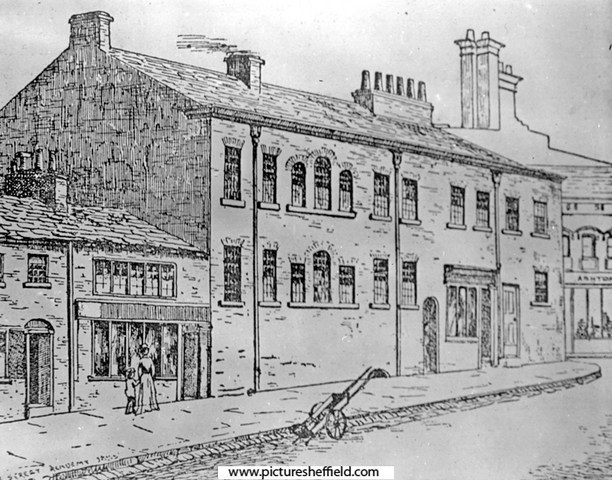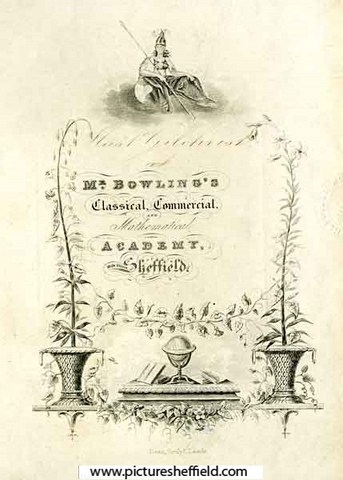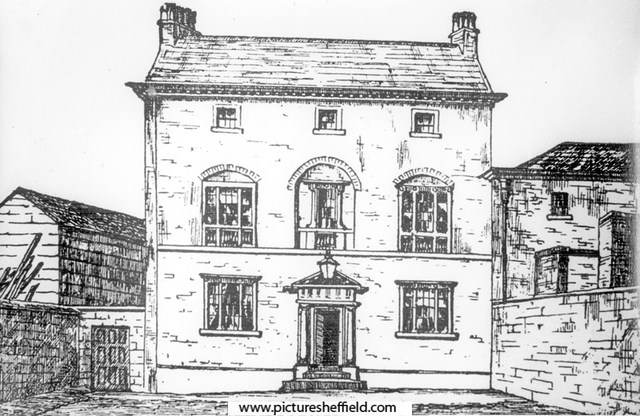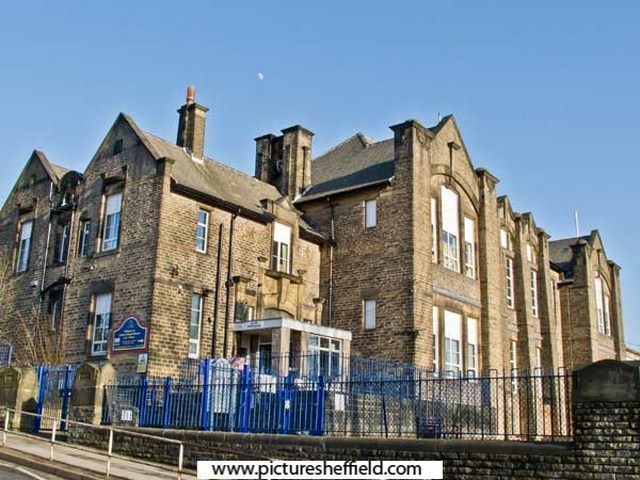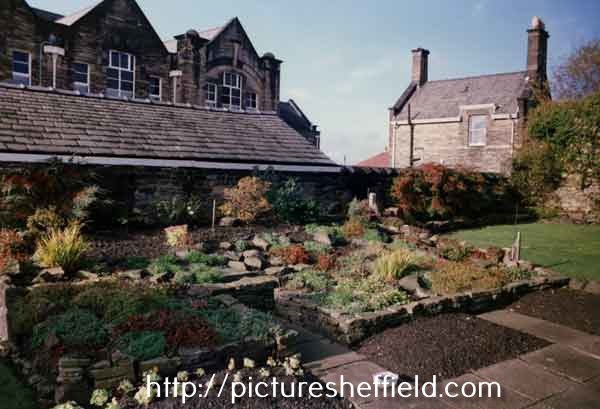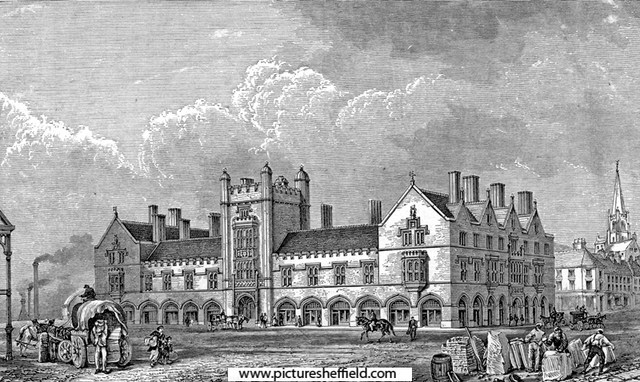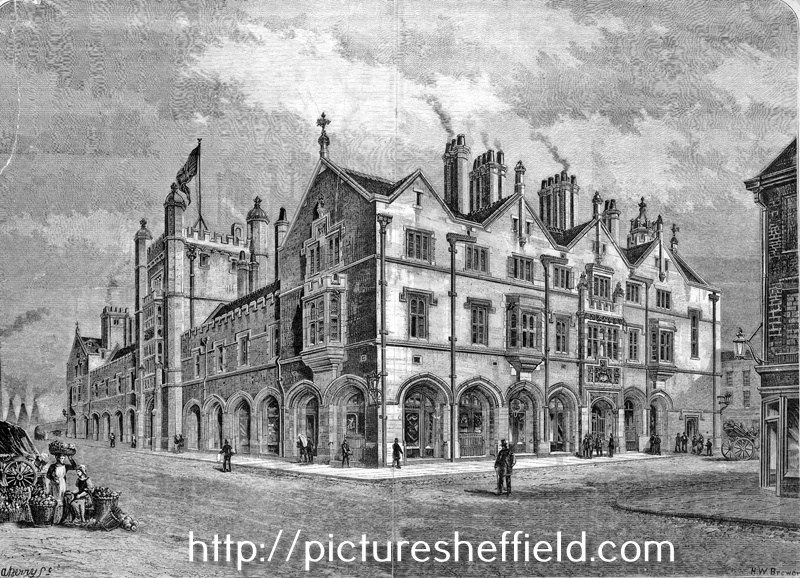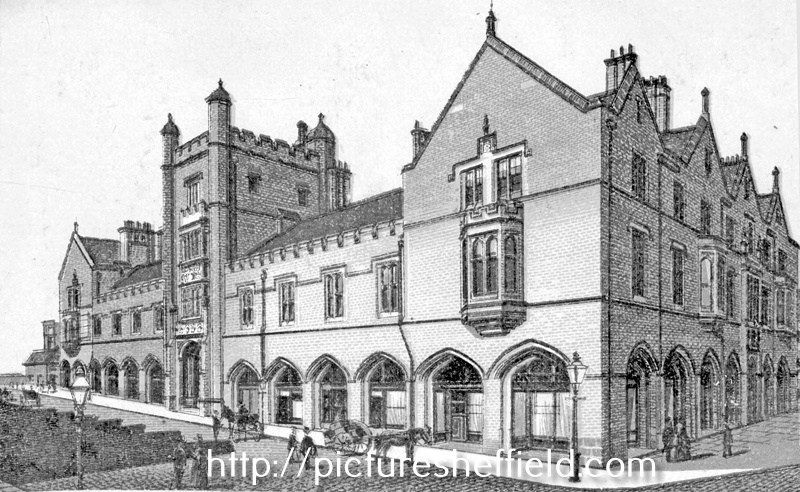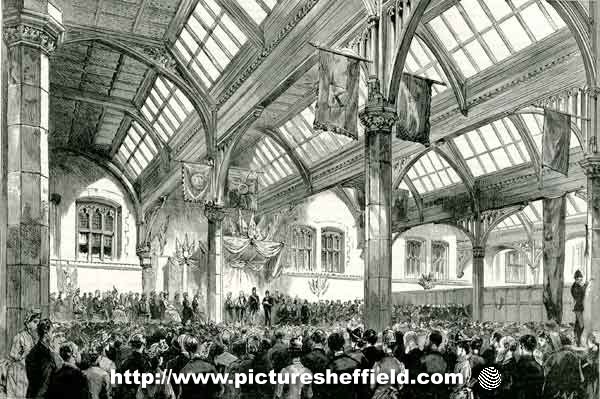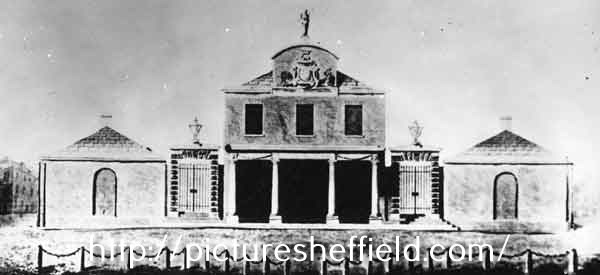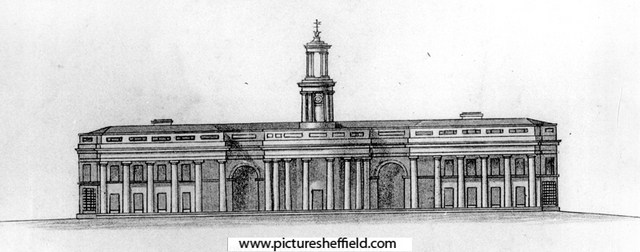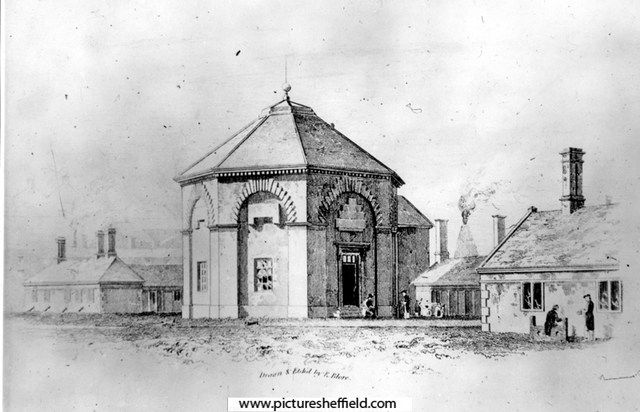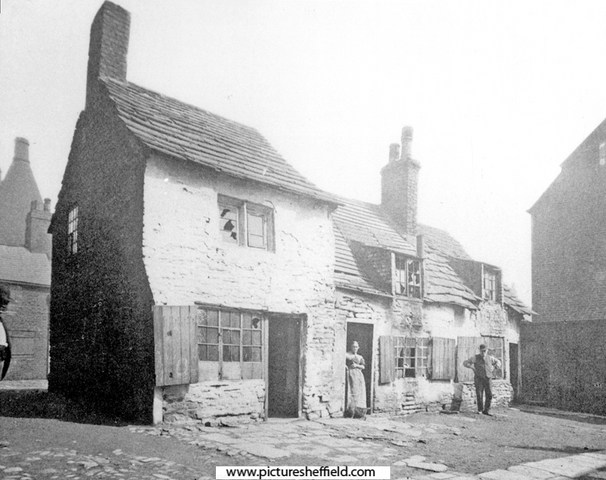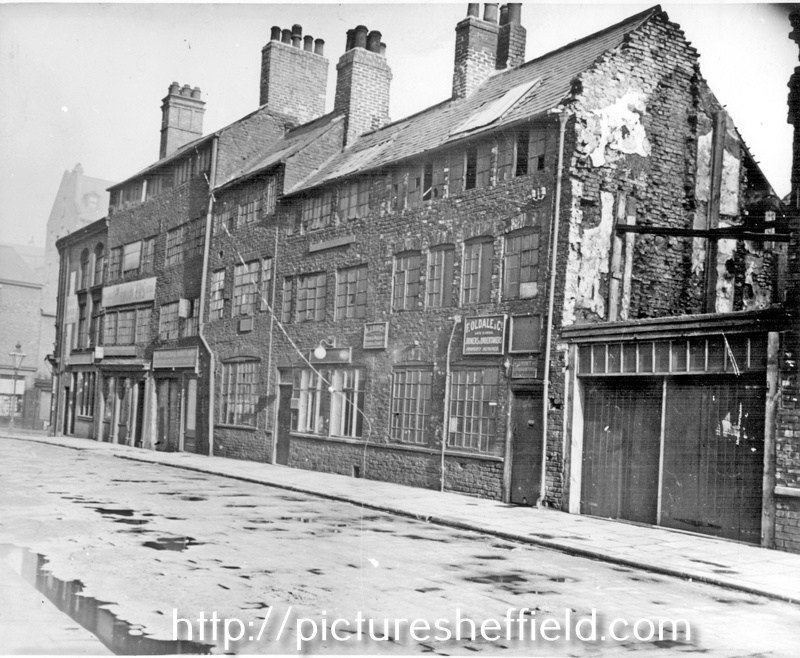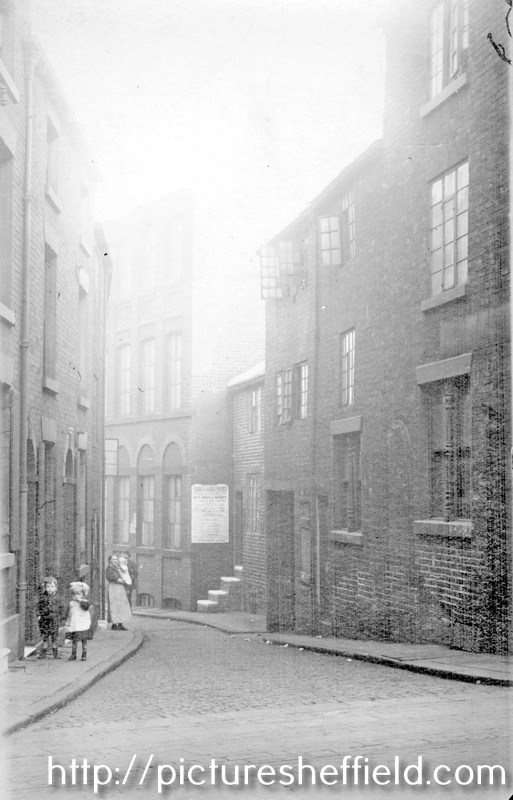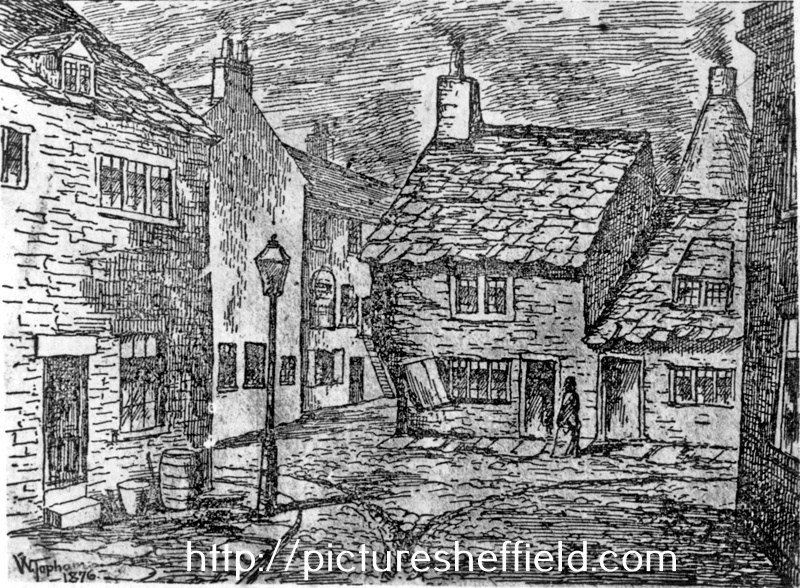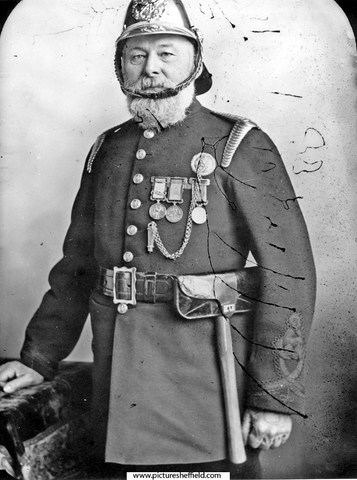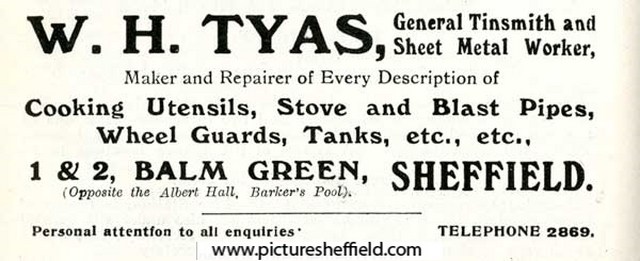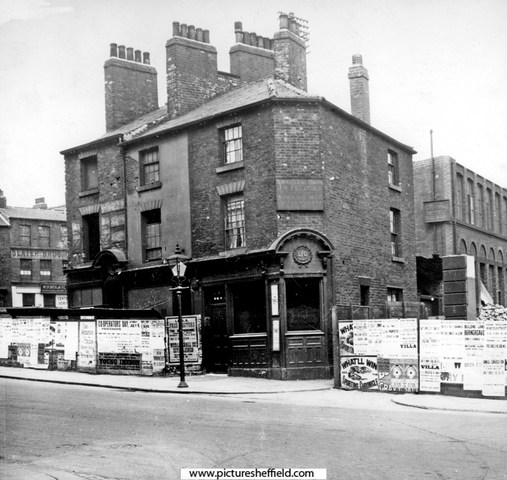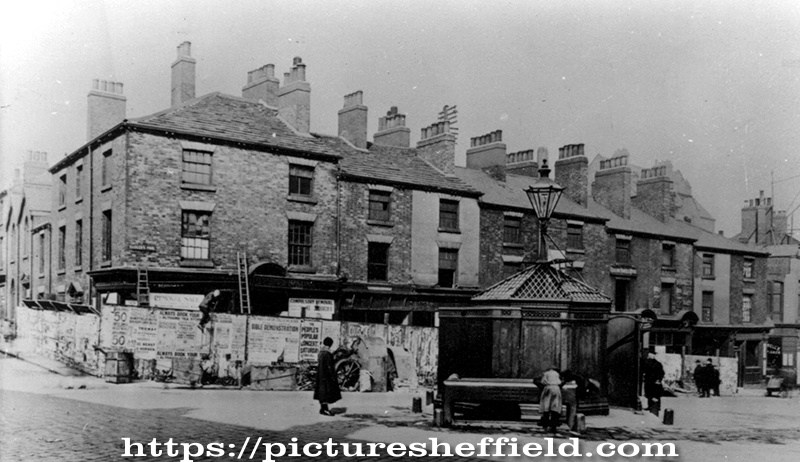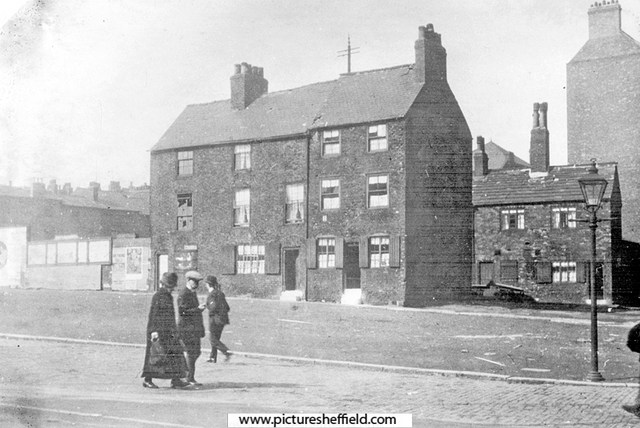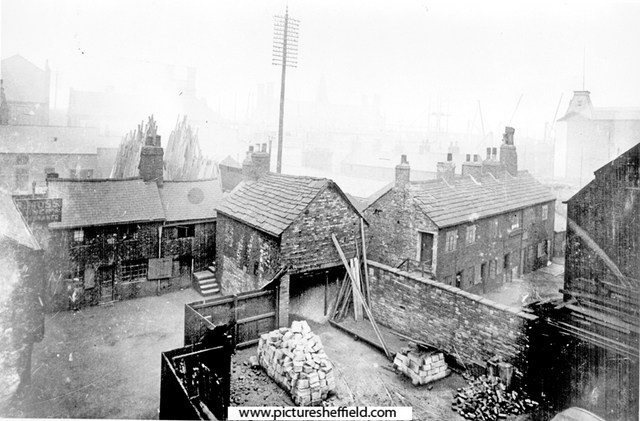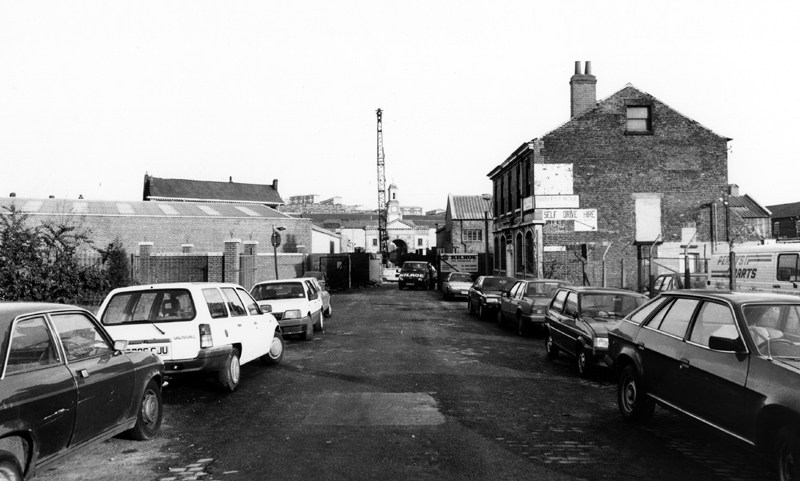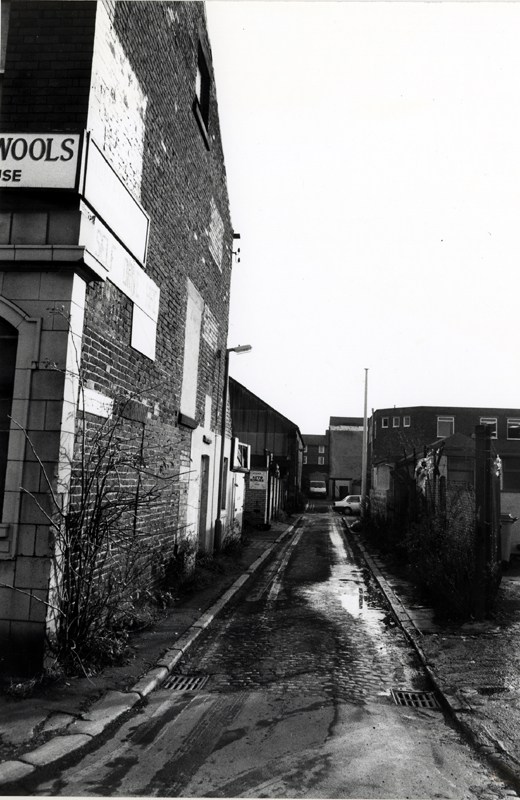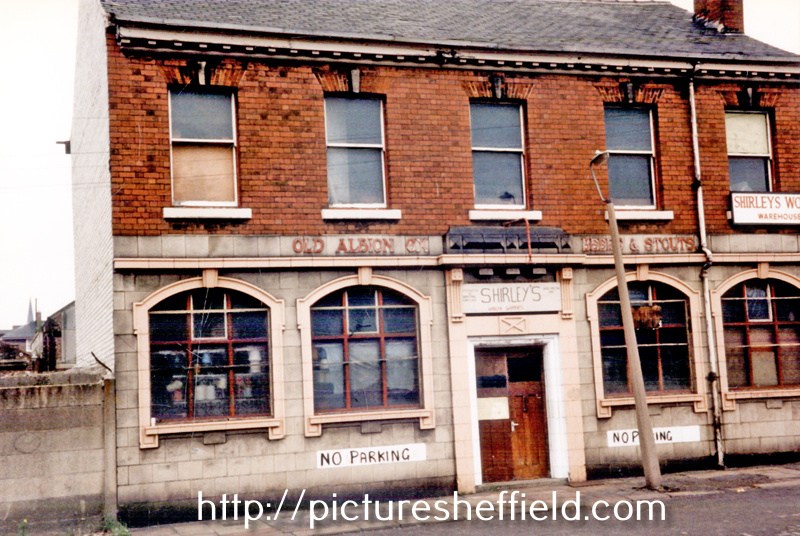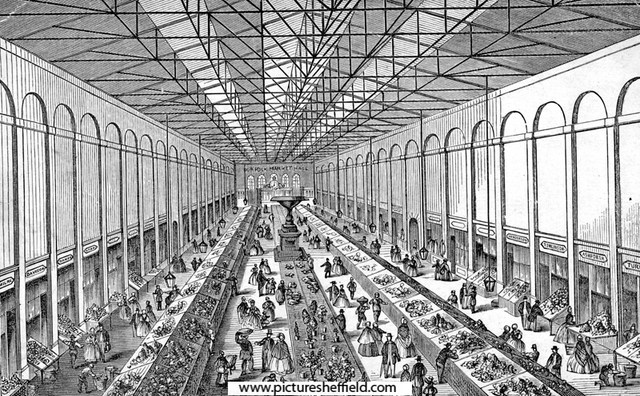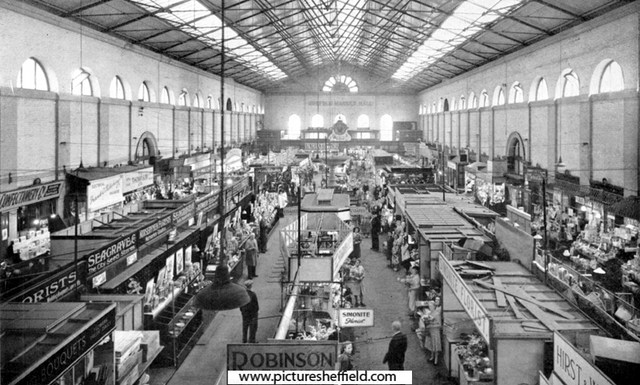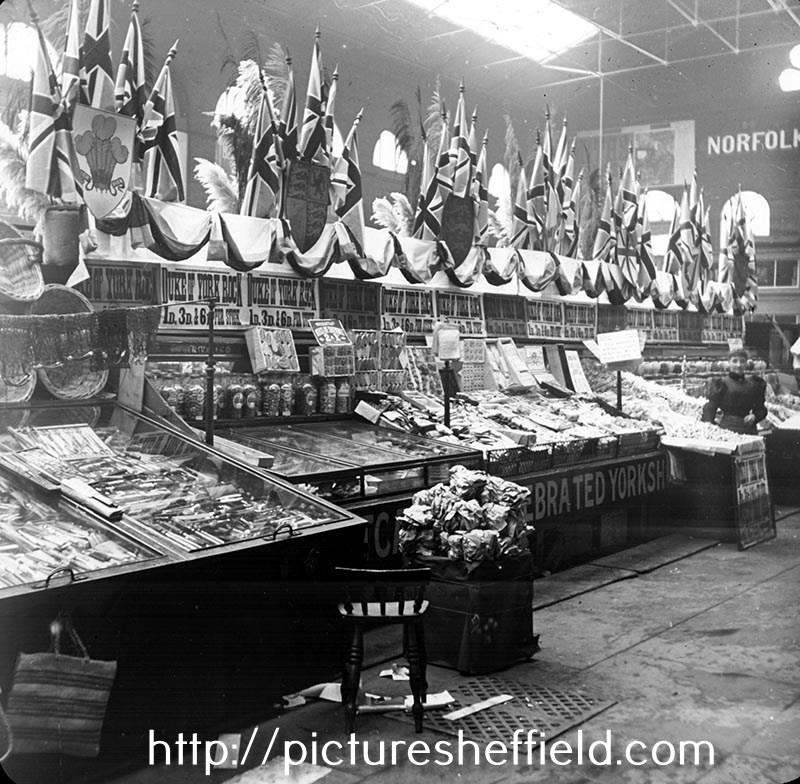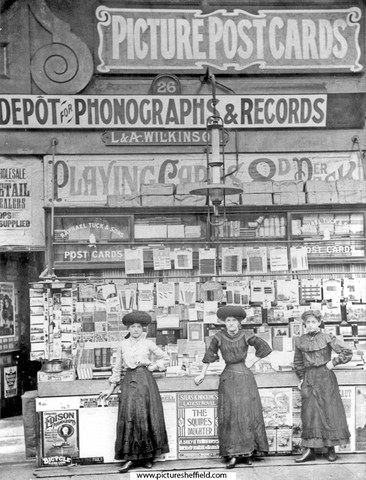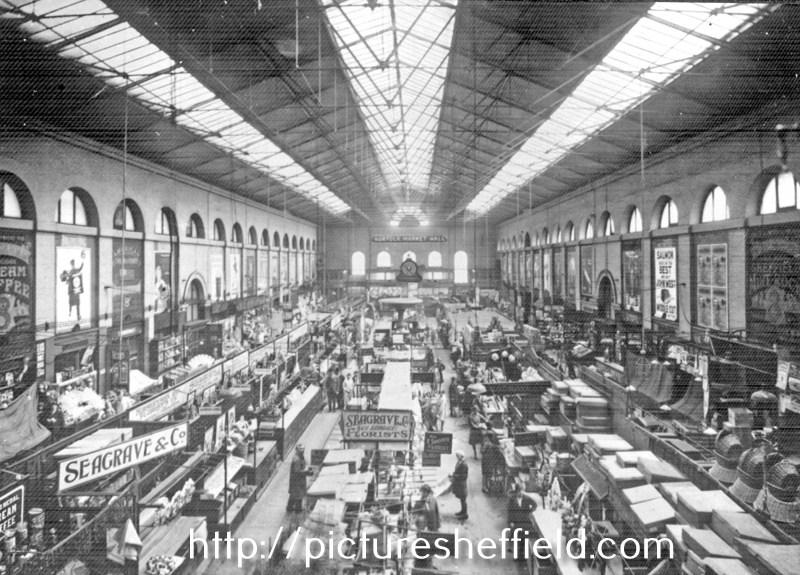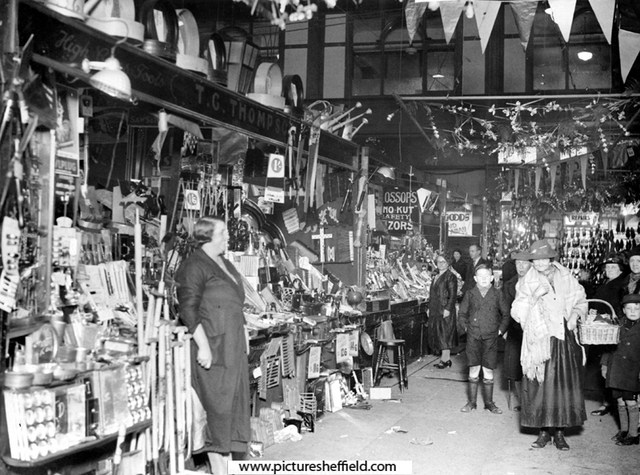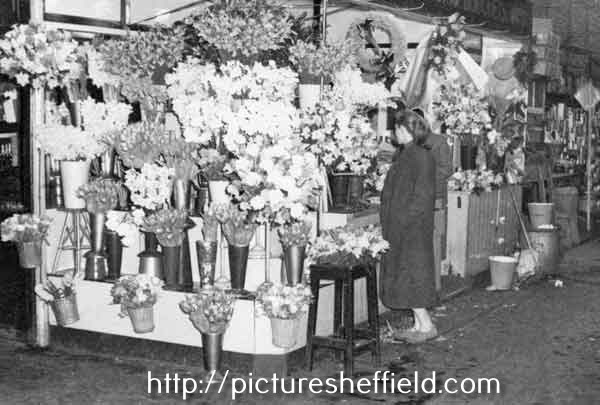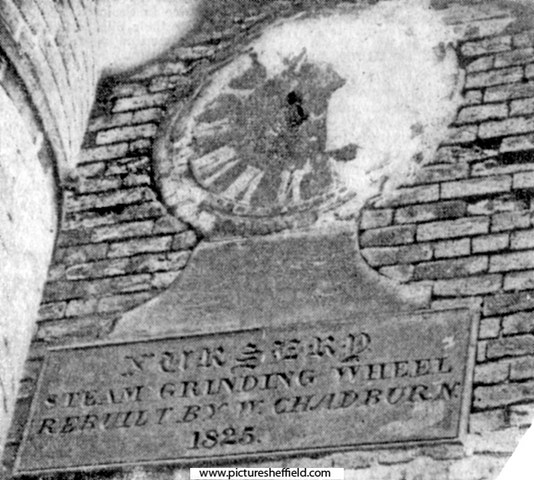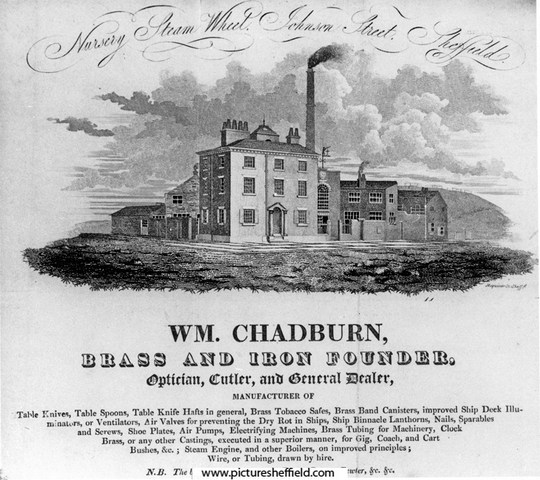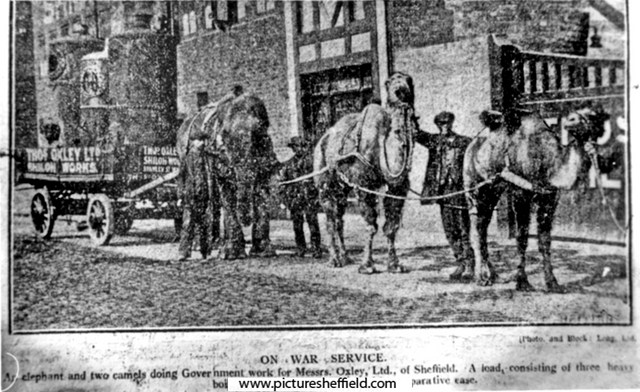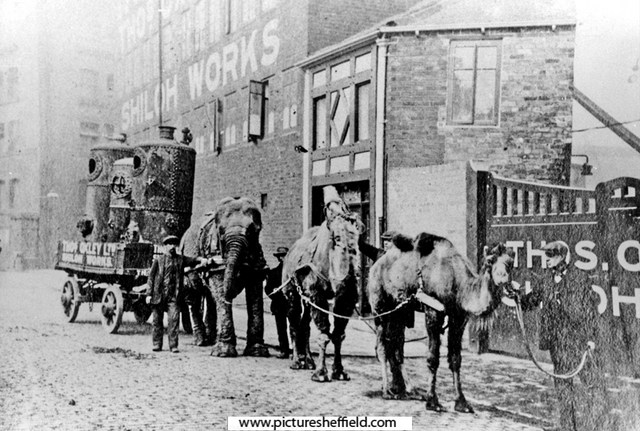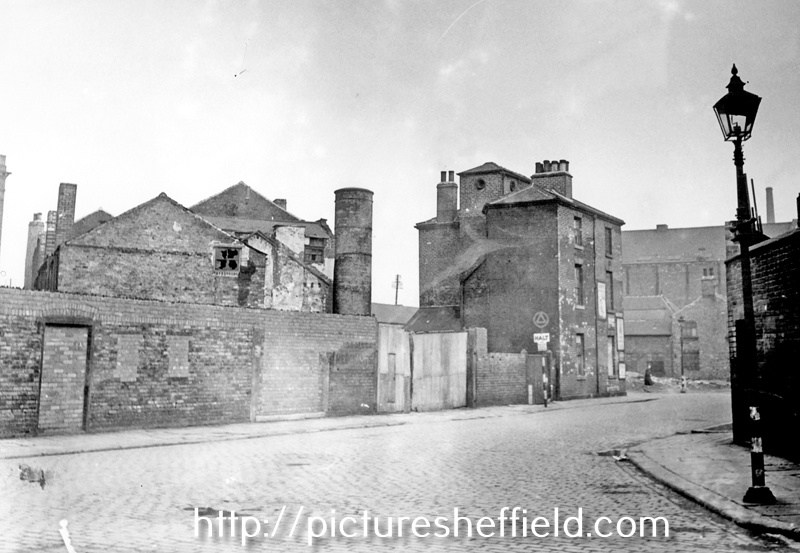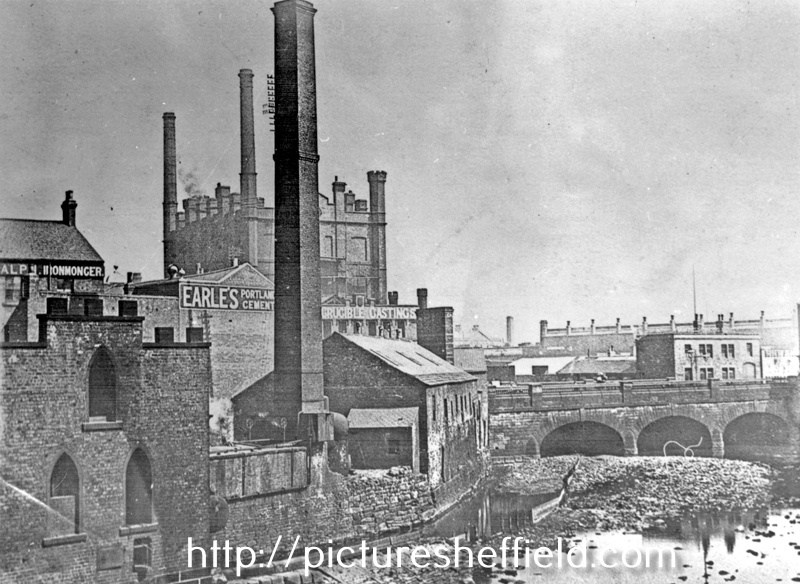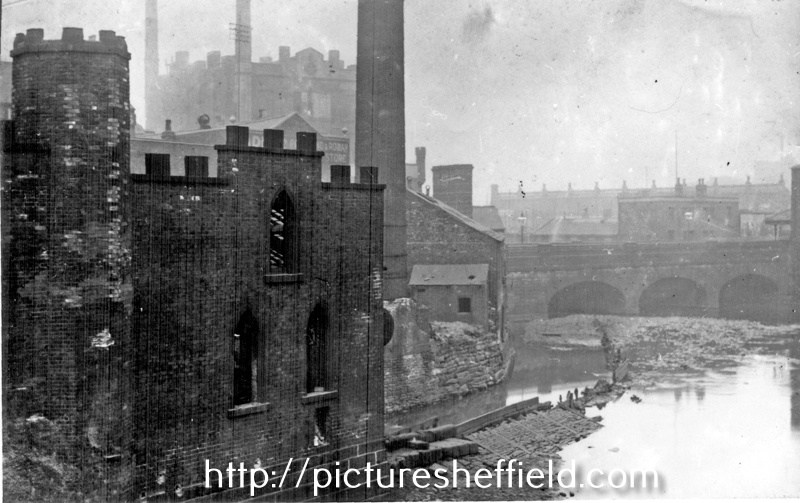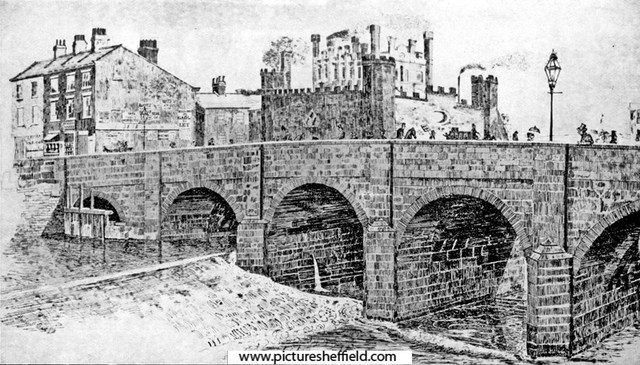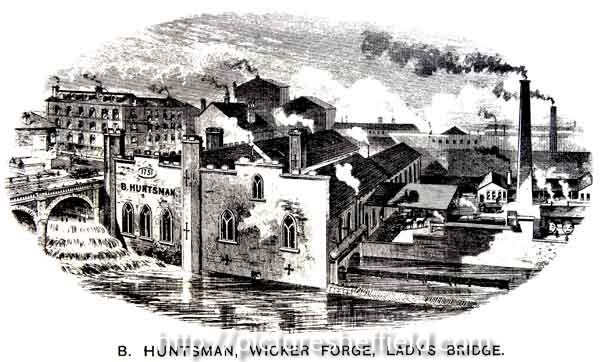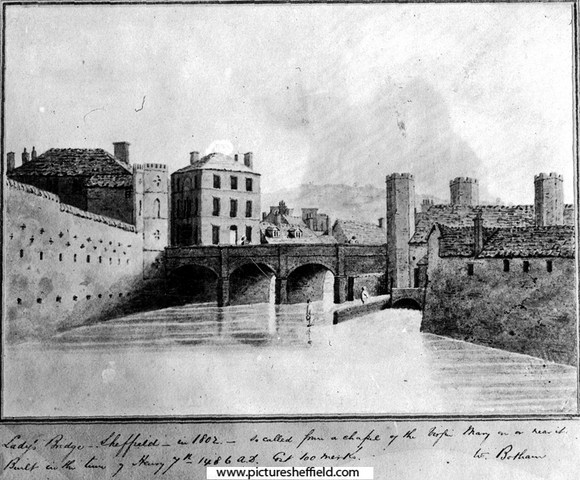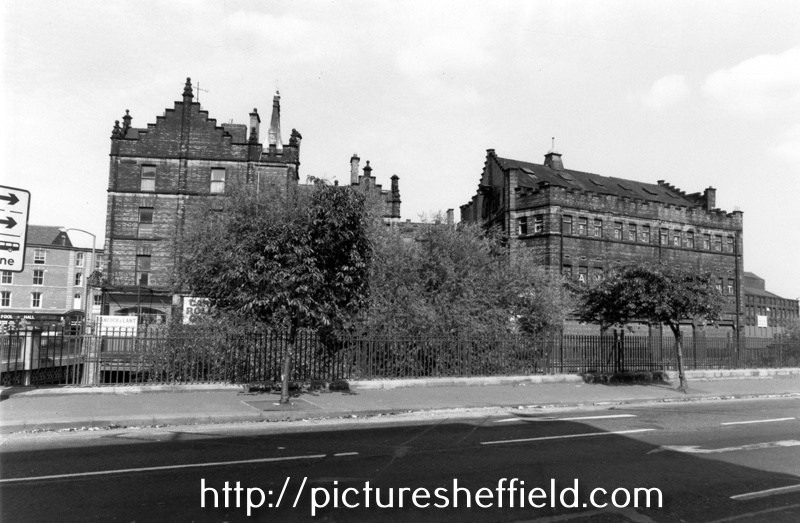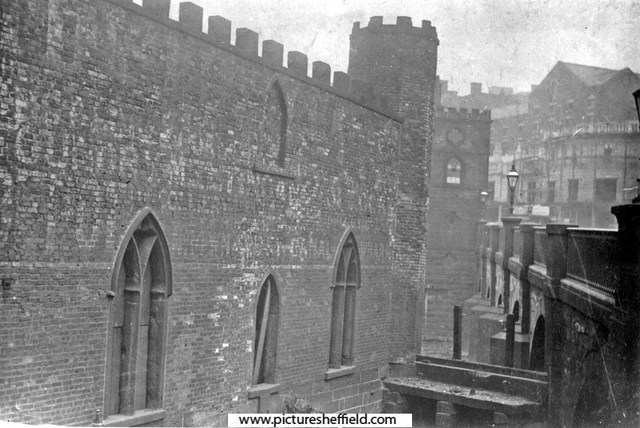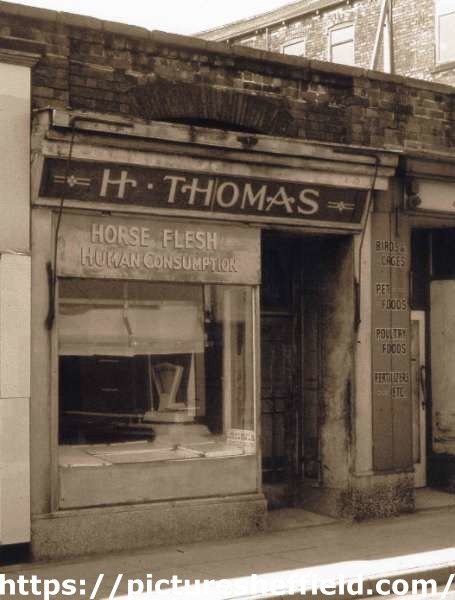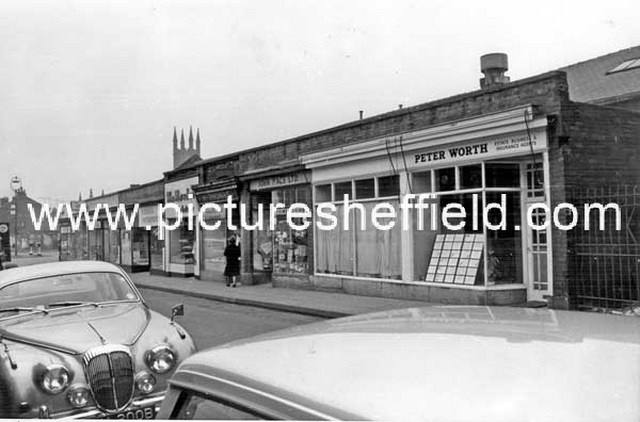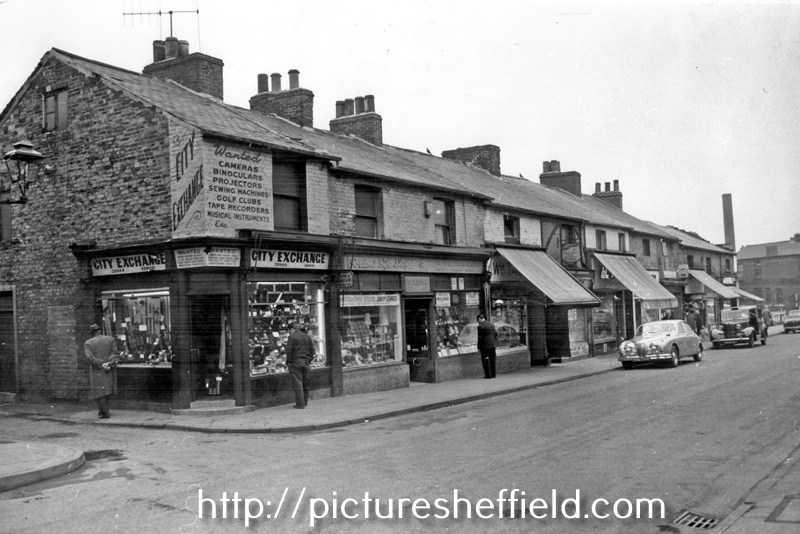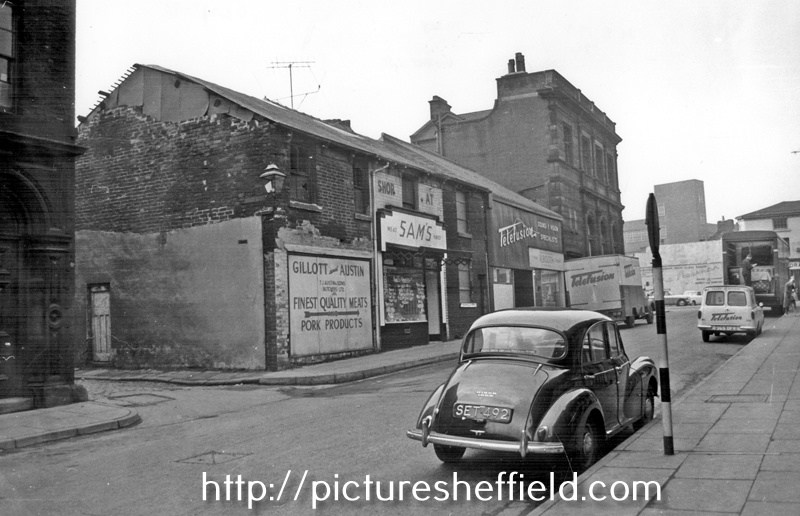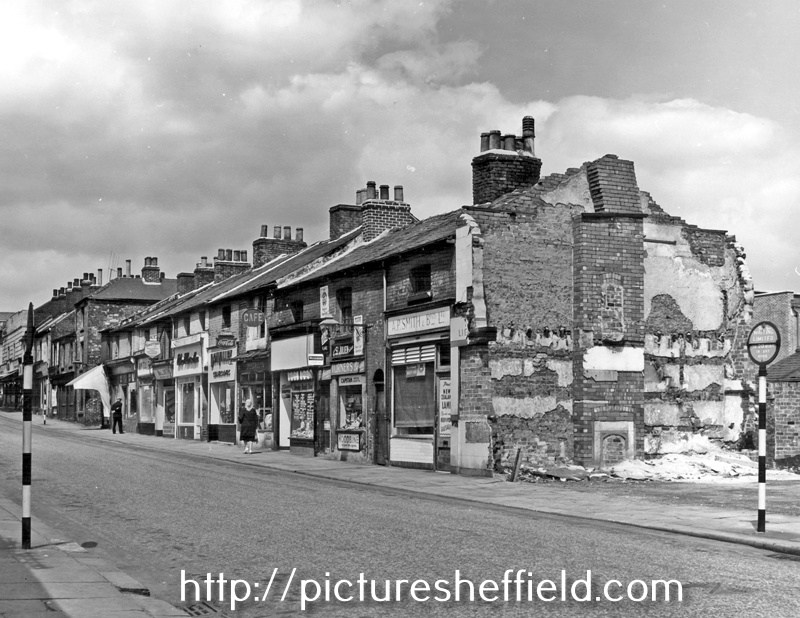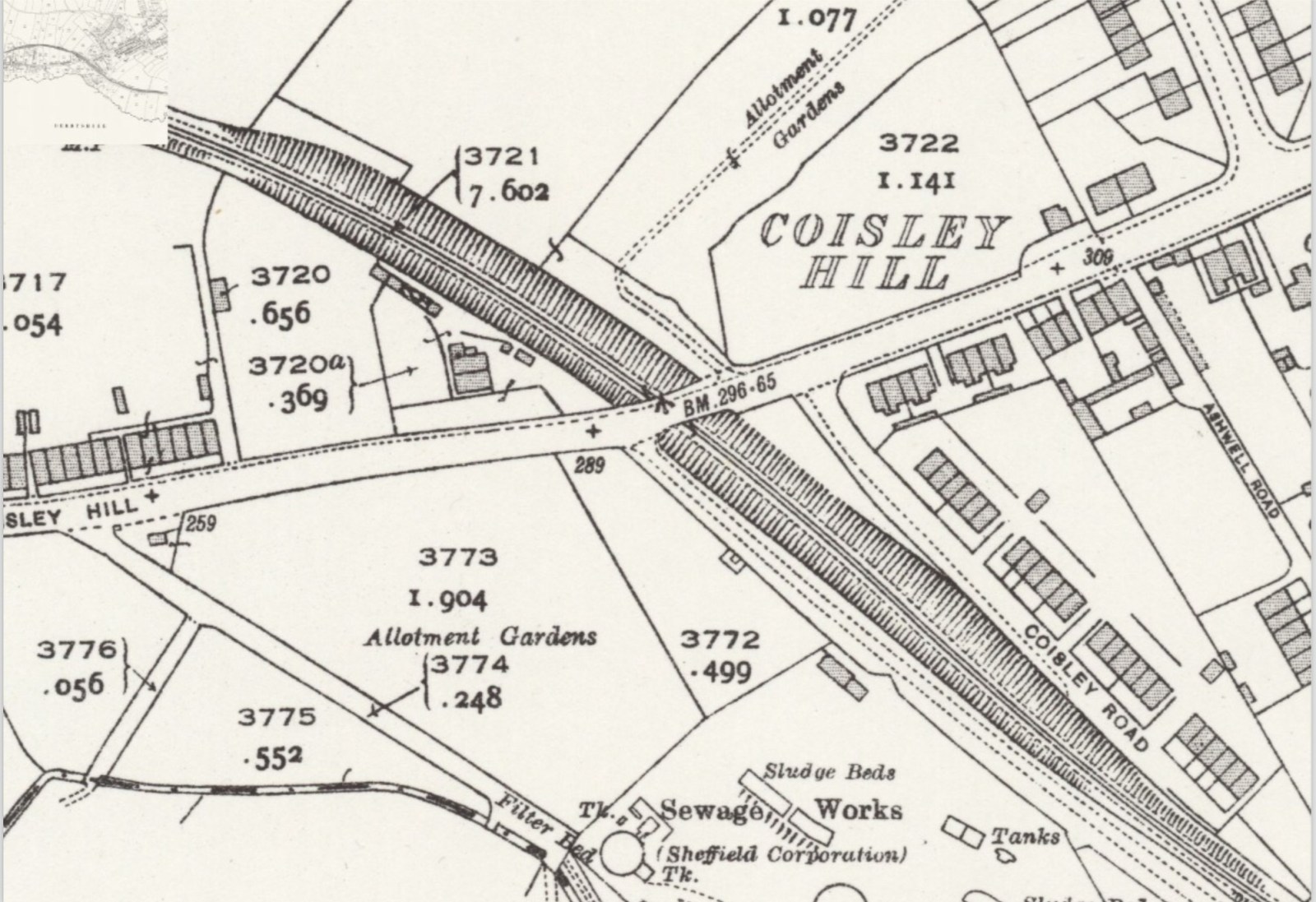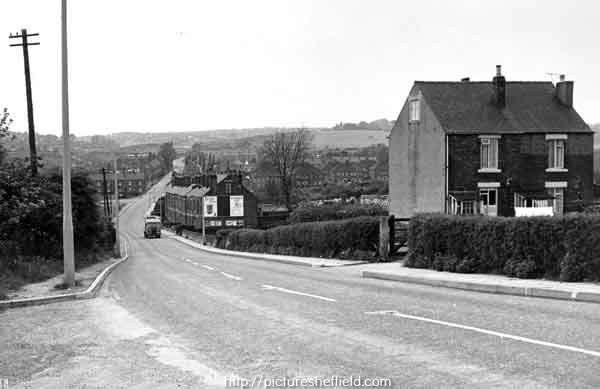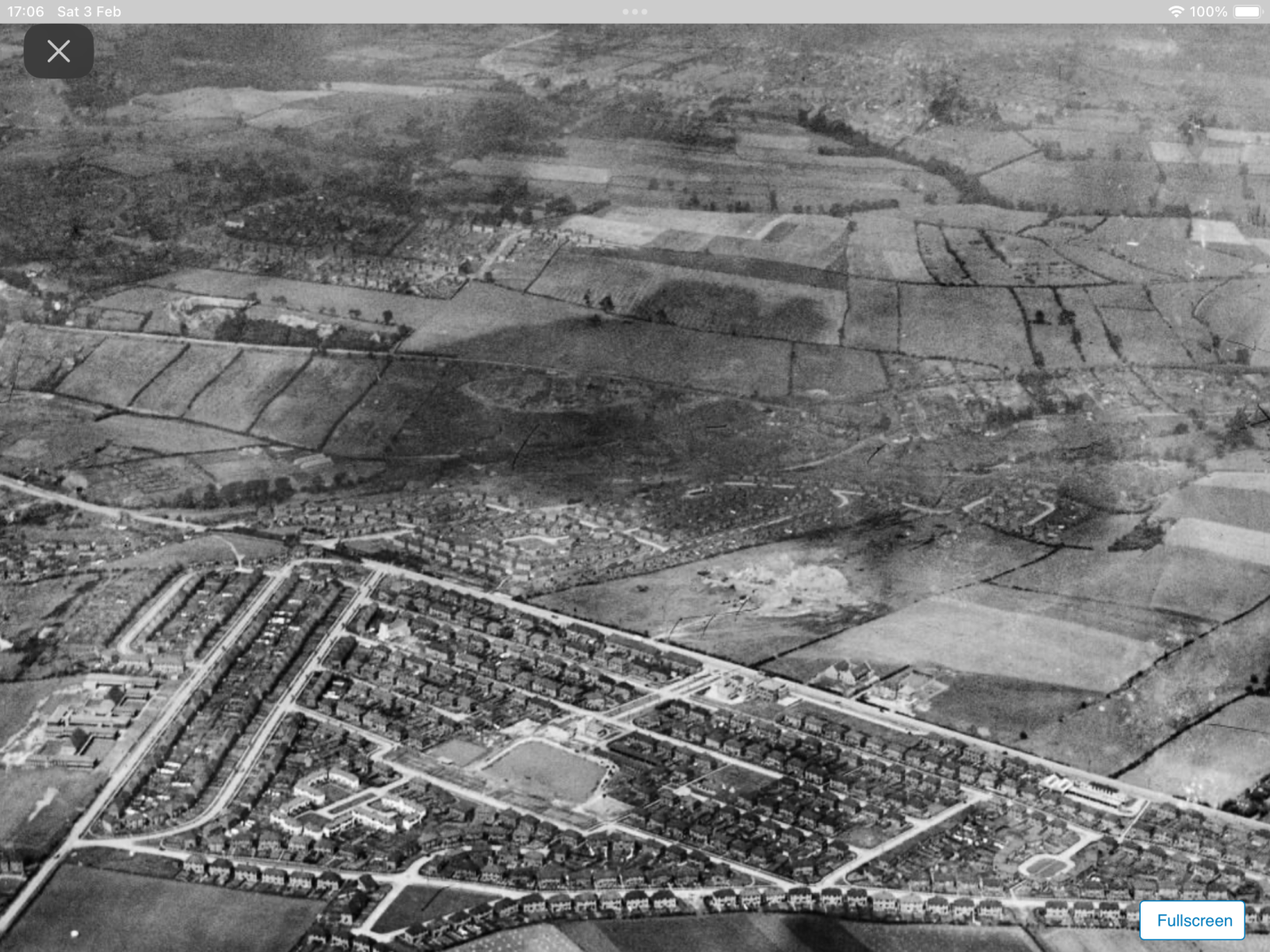Search the Community
Showing results for 'coal pit lane'.
-
Milk Street Academy. s06474 Brief History of Milk Street and the Academy https://sheffielder.net/2022/11/03/milk-street-swept-away-by-the-construction-of-arundel-gate/ Book Plate for Mr Bowling's Classical, Commercial and Mathematical Academy, Milk Street, Sheffield. y06440 Original at Local Studies MP 6443 M. Leeds Library Special Collections, Milk Street Academy ( Sheffield) https://explore.library.leeds.ac.uk/special-collections-explore/participant/68118 Includes Milk Street Academy. https://blogs.princeton.edu/cotsen/2017/05/good-job-reward-books-from-early-19th-century-english-schools/ Milk Street from Norfolk Street, Nos. 43-45 Harry Hartley and Son Ltd., hardware store (former Milk Street Academy). February 1964. https://www.picturesheffield.com/frontend.php?keywords=Ref_No_increment;EQUALS;s17929&pos=7&action=zoom&id=20613 https://www.picturesheffield.com/frontend.php?keywords=Ref_No_increment;EQUALS;s17930&pos=8&action=zoom&id=20614 A Plan of the Tenements and Ground held of the Earl of Surrey by the Heirs of the late John Trout and assigned by them to John Schofield containing in the whole 398 yards, 1778. Surveyor: William Fairbank II. Property on the corner of Norfolk Street and Milk Street, including the School House (1771 Petticoat Lane); erectors of buildings named; measurements. https://www.picturesheffield.com/frontend.php?keywords=Ref_No_increment;EQUALS;arc03211&pos=22&action=zoom&id=98297 A plan of the tenement and ground held of the Earl of Surrey by the heirs of John Trout and assigned by them to John Schofield. 1778. https://www.picturesheffield.com/frontend.php?keywords=Ref_No_increment;EQUALS;arc03656&pos=23&action=zoom&id=99206 A Plan of the Sundry Tenements [property] of the Earl of Surrey in Norfolk Street, Arundel Street [Sycamore Lane] and Pond Lane. 1780. https://www.picturesheffield.com/frontend.php?keywords=Ref_No_increment;EQUALS;arc04171&pos=25&action=zoom&id=104512 Shows Norfolk Street, Arundel Street, Bowling Green Lane, Pond Lane, Pond Mill Dam, Shude Hill, road to Pond Mill, Slaughter House Lane, Milk Street, Pond Well, Pond Well Hill, and Change Alley. Note: Sycamore Street is named Arundel Street on this plan; probably by a mistake, as the Arundel Street shown on FC/P/SheS/745 (1787) is the same as the modern street. Tenants: Joseph Ibberson, Joseph Mitchell, Ann Genn, Thomas Siddall, Margaret Nutt, Mary Naw, Robert Higginbottom, John Schofield, Eliz. Dickinson, John Linthwaite and sister, Eliz. Rodgers, Titus Salt, George Clark, James Kaye, Thomas Pearson, Robert Baxton, Thomas Lambert, John Hammond, John Walter, Thomas Laycock’s heirs, William South, Edward Hawke, Josephus Parkin, John Greaves, Thomas Law’s heirs, Thomas Darwin, Samuel Shepley, Thomas Wilkinson, The Whitelead Co., The Widow Newton, Samuel Broomhead, Robert Lambert, George Badger, Jonathan Hale, Joseph Hall, Sarah Chapman, William ?, Robert [Unwin], John Parkes, Richard Wilson, and others (illegible). The property which became John Schofield property is The Unmarked Property between Benjamin Damms & Milk Street was later part of the Milk Street Academy. Property between Norfolk Street and Sycamore Street, occupied by Benjamin Damms, John Barber and George Dalton, 1828. https://www.picturesheffield.com/frontend.php?keywords=Ref_No_increment;EQUALS;arc04173&pos=21&action=zoom&id=104514 Shows: Milk Street, Mulberrry Street, George Street, and Sycamore Street.Tenants / owners: Benjamin Damms, John Barber, George Dalton and Thomas Caverley. Extract from: Reminiscences of old Sheffield, it's Street and its People. From letters Editor Robert Eadon Leader, from articles and letters in The Sheffield and Rotherham Independent 1872/3. Page 247-248. Wragg: ..... Near, in Milk Street, is Mr. Bowling's School, celebrated as being kept by the late Mr. J. H. Abraham, who, besides having the best school in the town, was of a mechanical turn of mind, for in 1822 he invented a magnetic apparatus for the protection of persons employed in dry grinding. Twiss: A testimonial was presented to him in that year, "in token of respect for his talents, and in acknowledgment of his services to an afflicted class of workmen by his ingenious invention;" and he also received the gold medal of the Society of Arts for the same invention. Johnson: Like many other things that are theoretically sound, the magnetic apparatus was practically useless. The great complaint against it was, I believe, that it was speedily choked with the fragments of metal attracted, and then the respiration of the workman was distressingly hindered. Holy Green House, The Moor, between Eldon Street and Prince Street. Home of Thomas Holy, who entertained John Wesley there. Mr. Abraham, principal of Milk St. Academy, resided here, also used for boarders and evening classes y01674 Thomas Holy, a member of a very old Sheffield family of manufacturers and merchants lived at Holy Green House which stood in a large garden, with a long green lawn in front, on Sheffield Moor, between Eldon Street and Prince Street. Mr Abraham, the Principal of the Milk Street Academy, had Holy Green House for boarders and evening classes. Mr Abraham also resided here, but left in 1839. It was afterwards used by the Sisters of Notre Dame prior to their premises in Convent Walk. In 1870 it was the Ecclesall Club.
-
Wednesday team 1892 - one of the Woolhouses front right Harry was born in 1868 the son of Thomas and Mary, both filecutters of Ecclesfield. Two of Harry's younger brothers, Fred and Dan, were also successful footballers (at Wednesday and Barnsley). Harry probably came to the notice of Wednesday in March 1888, when he performed well in the Ecclesfield team which played against Wednesday at Bramall Lane (3-2 to Wednesday). By September he was a new man in the Wednesday team which lost 3-1 to West Bromwich Albion at Olive Grove. In March 1889 the entire Wednesday team were players at the Alexandra Theatre in a benefit for John Lisbourne (an entertainer). Harry played the part of a swell. In May 1891 Harry briefly became landlord of the Rose and Crown in Paternoster Row. In October 1892 Toddles was out of the Wednesday team, and playing a non-league game for them against Stoke, in the hope of re-invigorating his performance and regaining a place in the team. In December 1893 he was in a benefit match for Wednesday against Attercliffe. In January 1894 Harry had earned a place again in the Wednesday first team (as centre forward) against top of the league Aston Villa. A knee in the stomach in a match against Notts County in February 1889, though he was quickly out of the infirmary, detuned his performance. In April 1894 the champions of the Sheffield and Hallamshire Cup Competition, Mexborough, played a home match against a side selected from the other clubs in the league. Harry "Toddles" Woolhouse of Wednesday Wanderers was in that side. Toddles had a good second half but received a caution for a foul on "Cousin" Walter. The final score was one all. His last game for Wednesday was in March 1895. His first game for Barnsley was in August 1895. In January 1896 Barnsley played against Newcastle, Harry scoring three goals. Harry was in court in February 1897 summoned by a butcher for a £3 4 shillings debt for meat. His wife Ada testified that he was a professional footballer for the Barnsley St Peter's Club, earning £1 a week - when he got it - but had not been paid for some months, despite Barnsley recently doing well financially with the Cup-tie with Derby County. A month later the Secretary of Barnsley St Peters was subpoenaed to testify on Harry's earnings and stated that he received 30 shillings a week from September to April but nothing during the summer months, during which Harry had to maintain himself with his trade as a filecutter. Harry's wife re-appeared but could not explain his failure to pay the debt, and Harry was sentenced to 14 days in prison, though execution was suspended for a month, unless he paid the debt, which he promised to do. From the Sheffield Daily Telegraph of Wednesday 6th December 1911: OLD WEDNESDAY PLAYER'S DEATH - HARRY WOOLHOUSE Harry Woolhouse, of Ecclesfield, better known as "Toddles" Woolhouse, had the misfortune last Saturday week to injure his head by a fall. He was removed home, and attended by Dr. Stainsby, but his condition becoming worse, he was taken to the Sheffield Infirmary , where he died on Monday evening. "Toddles" was a member of the Wednesday team in their palmiest days, at OLive Grove, and was considered one of their best inside forwards. He had several accidents during his 14 years as a first team player, the most serious being when playing in a Cup-tie against Notts County at Olive Grove, when he was acidentally hurt by Clements, one of The Notts backs. Woolhouse had to decline all engagements after that occurrence. [In fact he played for three seasons after the incident] He will be buried at Ecclesfield tomorrow at 3.30. Toddles was only 43 years old.
-
Yes! In the early 2000s one was seen by a few people in the Killamarsh, Mosborough, Eckington area. I and my wife were travelling toward Eckington from the Marsh Lane area when ,on our left, we both spotted a low flying, almost shapeless, bright object which maintained our speed for the length of the Moss Valley then took off at an amazing speed. I seem to recall that the Star carried a small piece on the sighting…quoting people in Killamarsh who around the same time of day had seen something similar.
-
Plans of Lydgate Lane School. 1905. Architect: W. J. Hale, FRIBA, St. James Row, Sheffield. Elevations (South West, North West and South East) . https://www.picturesheffield.com/frontend.php?keywords=Ref_No_increment;EQUALS;arc06816&pos=8&action=zoom&id=106212 Elevation (North East) https://www.picturesheffield.com/frontend.php?keywords=Ref_No_increment;EQUALS;arc06817&pos=9&action=zoom&id=106213 Sections https://www.picturesheffield.com/frontend.php?keywords=Ref_No_increment;EQUALS;arc06818&pos=10&action=zoom&id=106214 Floor Plans (ground and first floor) https://www.picturesheffield.com/frontend.php?keywords=Ref_No_increment;EQUALS;arc06819&pos=11&action=zoom&id=106215 Originally Lydgate Council School formally opened Nov. 1907 by Lord Mayor, Alderman H.P. Marsh J.P. See: City of Sheffield, Education Committee, Handbook of Information, 1964/65. Local Studies Ref. 379.4274 S Lydgate Infant School, Lydgate Lane. 3rd March 2012 c04322 Photographer: Alex Ekins Carved stonework above the entrance to Lydgate Infant School, Lydgate Lane. 2003 https://www.picturesheffield.com/frontend.php?keywords=Ref_No_increment;EQUALS;t10770&pos=2&action=zoom&id=92430 Caretakers House and Lydgate Lane Infant School. 29th January 1979. https://www.picturesheffield.com/frontend.php?keywords=Ref_No_increment;EQUALS;s24993&pos=9&action=zoom&id=27773 Playshed, Lydgate Lane School. 1989.t10120
-
Plan of the Pheasant Inn, 10 Broad Street included in: Plan showing location of New Market Hotel, proposed to be purchased and also leasehold premises to be surrendered. https://www.picturesheffield.com/frontend.php?keywords=Ref_No_increment;EQUALS;arc03510&pos=3&action=zoom&id=98730 Shows Sheaf Lane, Sheaf Street, Sheaf Market, Broad Street, Pheasant Inn, Horse and Jockey and Queen's Head.
-
Plan of a projected street between Queen Street and West Bar Green. 1817. https://www.picturesheffield.com/frontend.php?keywords=Ref_No_increment;EQUALS;arc04217&pos=13&action=zoom&id=105201 Marked: Tenter Street, Pea Croft, West Bar Green, Silver Street, Paradise Square, Workhouse Croft, Queen Street, workhouse, reservoir, fitting up shop, boring mill, Foundry, warehouses, smiths shops, fetling shop [?fettling shop], counting house, lumber house and model chambers, engine house. Tenants / owners: John Haslehurst, W. B. Thomas, John Clayton, Joseph Whitehead, Samiel Eadon, Robert Burnand, S. B. Ward, George Smith, - Eyre, Charles Rhodes coopers shops, John White, John Darwin, Benjamin Hounswind?, John Sevrap?, and Edward Gains. Town land, extending from Broad Lane End to West Bar, 1778. https://www.picturesheffield.com/frontend.php?keywords=Ref_No_increment;EQUALS;arc04287&pos=18&action=zoom&id=105972 The plan has notes made in 1784. Marked Broad Lane End, Hollis Croft, Rotten Row, West Bar Green, Pea Croft, White Croft, Hawley Croft, Gregory Row, Silver Street, Hick Stile Field, Queen Street, Workhouse Croft, and Workhouse. George Hounsfield, Samuel Radford, John Birks, George Allen, George Oates, John Haywood, Hollis Hospital land, Thomas Wilkinson, Josh. Bower of Hollis Hospital, Martha Hill, John Foster, William Thornton, John Thompson, Matthew Lambert, John Goodwin, Ebenezer Wall, George Greaves, Thomas Radford, Joseph Hepworth, Mary Cowley, Samuel Crook, Widow Bradshaw, George Pears, John Holberry?, Catherine Dixon, Mark Skeltens?, John Hobson, Stephen Green, John and George Wild, [?] Green, The Overseers of the Poor in the Township of Ecclesfield, Ecclesfield Workhouse [tenants of this parcel of land], John Longden, Mary Pearson, John Darwin and Co., and Samuel Marshall.
-
Plan of the Queen's Foundry, Queen Street and premises adjoining in Sheffield. 1842. https://www.picturesheffield.com/frontend.php?keywords=Ref_No_increment;EQUALS;arc04225&pos=4&action=zoom&id=105209 Marked: Model warehouses, stable, stable loft, manure, old warehouse, shed, smiths and joiners shops, foundry, boring and turning mil, engine house, dwelling house, ash pit, privy, reservoir, counting house, fetling shops, sand and core shed, fitting shops, model and lumber rooms, and furnaces. Wardle & Bentham 1814-1815 Iron founders & Masters Darwin & Co., Queens Foundry, Chapeltown, Elsecar & Worsbrough. General & Commercial Directory of Sheffield. 1825. Darwin & Co. mill & engine work in all of its branches, Queens Foundry, Queen Street. White's General Directory 1849. Darwin & Co, New Queen Street, iron founders; stove grate; mill and engine work manufacturers, Queens Foundry, New Queen Street. Thomas Darwin, iron founder & etc. h. 77 Occupation Road. Whites Directory 1852. Darwin & Co. iron founders; stove grate; engine and mill work manufacturers, Queens Foundry, 68 New Queens Street. Thomas Darwin, iron founder & etc. h Handsworth. Whites Directory 1862 Darwin & Co. iron founders & stove Grate & etc manufacturers, Queens Foundry 68 Queens Street. John Darwin, public weighing machine proprietor, 68 New Queen Street. Samuel Darwin, iron founder & Co. (Darwin & Co) h. 8 Hanover Square. Thomas Darwin, iron founder & etc., h. Blenkarn Place, Rock Street. White's Directory 1872 . Darwin & Co. engineers, millwrights, iron founders; general stove grate manufacturers; silversmiths; coppersmiths; tinner brazier tool manufacturers, 98-108 Queen Street. Thomas Darwin, (D & Co) h. 99 Rock Street. Which Queen? Thought it would be Queen Victoria until discovered it was named Queens Foundry earlier. Probably Queen Charlotte wife of George III. Queen, 8th September 1761-17th November 1818. Crowned. 22nd September 1761.
-
New Corn Exchange, built early 1880-81, Broad Street, right. s00292 Corn Exchange - built for the Duke of Norfolk in 1881 The Central Hall of the Corn Exchange was gutted by fire in 1947 and the offices surrounding it were demolished in 1964. Engraving of the newly built Corn Exchange, Broad Street, right. s22437 H.W. Brewer (Etcher) u02332 The Shah of Persia [Iran] in England - scene in the Corn Exchange, Sheffield, during the presentation of an address from the Mayor. 1889.y11829 Image from The Graphic, 20 July 1889. Sheffield Local Studies Library: MP 1834 L. Architects drawing for the Old Corn Exchange, Broad Street erected 1830. This design was never built. s41155 Architects design for the old Corn Exchange - 1830 (this was not the adopted design) s01896 The old Shrewsbury Hospital, Castlefolds, founded 1616. The Corn Exchange later stood on this site. 1st January 1819.s07452 E. Blore, Artist Plan of part of the town of Sheffield, comprising the site of the present and proposed corn, hay and cattle markets, also various improvements connected with the latter. 1827. With illustrations of proposed Corn Exchange, elevation of the houses fronting the new Hay Market, and an elevation of the bridge over the Dun [Don]. https://www.picturesheffield.com/frontend.php?keywords=Ref_No_increment;EQUALS;arc04183&pos=14&action=zoom&id=104936 Reference a - Proposed Corn Exchange and office, b - erections on each side of Corn Exchange, c - weighing machine, d - row of shops. Inns in the immediate vicinity of the present Hay and Corn Markets 1 George, 2 King’s Head, 3 Angel, 4 Commercial, 5 Yellow Lion, 6 Tontine, 7 Healeys Hotel. The sites of the present Hay, Corn and Cattle markets are coloured red, and proposed are coloured blue. Other improvements are shown in yellow. Marked are: Market Place, Angel Street, Angel Inn, old Corn Market, King Street, Post Office, Change Alley, Kings Head, Fruit Market, Market Street, Norfolk Street, John Street, Commercial Inn, Hay Market, Yellow Lion, Pond Lane, Shude Hill, Fish Market, Dixon Lane, Tontine Inn, Castle Folds, Castle Hill, Healeys Hotel, Sheaf Bridge, River Sheaf, canal bridge, proposed Hay Market, proposed Corn Market, Broad Street, Canal Basin, Canal Warehouse, Market for fat cattle, lean cattle and milch cows, pig market, sheep market, River Dun [River Don], Willey Street, Blonk Street, Wicker, Cattle Market, Ladys Bridge, Bridge Street, Wain Gate, Town Hall, Killing Shambles and Castle Street. Sheffield Markets. 1847. https://www.picturesheffield.com/frontend.php?keywords=Ref_No_increment;EQUALS;arc04188&pos=16&action=zoom&id=104947 Marked: Old Haymarket, Dixon Lane, Castle Folds, Exchange Street, new market ground, Cheese Market, Corn Exchange, Broad Street. New Corn Exchange - plan showing groups of desks. 28th November 1881. Architects: M E Hadfield and Son, Architects, New Corn Exchange Chambers. https://www.picturesheffield.com/frontend.php?keywords=Ref_No_increment;EQUALS;arc04419&pos=8&action=zoom&id=151747 Corn Exchange - office doors, panels and rails, etc., c.1881? Not dated. https://www.picturesheffield.com/frontend.php?keywords=Ref_No_increment;EQUALS;arc04417&pos=6&action=zoom&id=151745 Corn Exchange - doorway, etc., c.1881? Not dated. https://www.picturesheffield.com/frontend.php?keywords=Ref_No_increment;EQUALS;arc04418&pos=7&action=zoom&id=151746 Maunche Hotel and Corn Exchange, Exchange Place / Wharf Street on Ordnance Survey Map. 1890. https://www.picturesheffield.com/frontend.php?keywords=Ref_No_increment;EQUALS;y06787&pos=3&action=zoom&id=59989
-
Not sure how these plans help but anything I find mentioning Golden Cross I'll post. A map of a Close belonging to the Duke of Norfolk now subdivided into gardens, and late under Lease with the Golden Cross in Sheffield. 1777. https://www.picturesheffield.com/frontend.php?keywords=Ref_No_increment;EQUALS;arc03127&pos=4&action=zoom&id=98112 The second close as shown in ACM/MAPS/SheS/1532a, now entirely divided into gardens; numerical list with tenants names, descriptions and measurements; both these closes may be seen also on ACM/MAPS/SheS/1534. Shows 'Burying ground of the people called Quakers'. Also shows the proposed route of Garden Street. Original at Sheffield City Archives ref. ACM/MAPS/Shes/1533L. A plan of the Ground and Tenements in Campo Lane the property of the Duke of Norfolk, formerly let with the Golden Cross, containing in all 1,080 yards. 1777. https://www.picturesheffield.com/frontend.php?keywords=Ref_No_increment;EQUALS;arc03117&pos=3&action=zoom&id=98098 Surveyor: William Fairbank II. This plan supplements ACM/MAPS/SheS/1581, showing in detail the tenements at the point later to be the junction of Vicar Lane with Campo Lane; tenants; buildings named. (south side of Campo Lane; Hawley Street, Lee Croft). Original at Sheffield City Archives: ACM/MAPS/SheS/1576s.
-
Plan of Samuel Mitchell and Co's premises in Furnival Street, measured for sale. 1835. https://www.picturesheffield.com/frontend.php?keywords=Ref_No_increment;EQUALS;arc04112&pos=313&action=zoom&id=103724 Refers to steel warehouse, converting furnace, steel room, shed, privies, melting furnace, iron warehouse, pump, clay shed, hearths, coke shed, casting shed, reservoir, stable, and warehouse. Premises are situated between Union Lane and Eyre Street.
-

For Reasons Which Will Become Apparent Eventually ...
Ponytail replied to RichardB's topic in Sheffield Genealogy
Plan of the corner of Balm Green and Blind Lane, measures taken in Balm Green to fix the line of Division Street where it will pass through the Towns' property; sketch showing the street after the demolition of the old Town property, [1792], 18. https://www.picturesheffield.com/frontend.php?keywords=Ref_No_increment;EQUALS;arc04094&pos=301&action=zoom&id=103509 Three plans pasted together. Shows Division Street, Coalpit Lane, Blind Lane and Balm Green. Tenants / owners marked: Thomas Sayles, Thomas Bennett, John Smith, Edward Brownell, Edward Harrison, Thomas Bennett, Sarah Potter, John Beavans, Timothy Millington, late Sephton, now Thomas Marshall. An outline of the land between Barker's Pool and Church Street, with Brelsforth's Orchards coloured green, 1804. https://www.picturesheffield.com/frontend.php?keywords=Ref_No_increment;EQUALS;arc04039&pos=123&action=zoom&id=103300 Leopold Street, Balm Green, Orchard Lane and Fargate shown (but not labelled). Refers to S. A. Younge, furnace, James Creswick, Jonathan Moor, Malin Gillott and others, Allen and White, Richard Ibberson, Edward Brownell, Christopher Oates, Edward Adamson, Thomas Maxfield and others, Thomas Sayles's freehold, Thomas Bennett, John Smith, Town Land, John Brookes, Sarah Potter, Barkers Pool, John Lindley's freehold, Duke of Norfolk - given in exchange to the To-- [Josep Holland?], George Woollen, William Pavell, Samuel Younge, Rose, Charles Milner, John Jenning, - Webster, William Rowley and tenements and ground proposed to be taken by E? Brook [Brookes?]. Photographs Date Period:1900-1919 Cottages at Balm Green, site of City Hall, on the left are the furnaces of the Queen Steel Works belonging to John Lucas, iron and steel merchant on Holly Street. 1900.s00689 Balm Green, including F. Oldale and Co., joiner and undertaker, No 2 Balm Green. s13218 Fred Oldale (1878-1940) appears on censuses as journeyman joiner until the 1921 census when he is recorded as a joiner and undertaker in the employ of Robert Moss a joiner, builder and undertaker. Robert Moss is listed in Whites 1901 directory at Balm Green as a joiner, builder and undertaker. Balm Green from Holly Street. s19361 Artists Impression of the Cottages at Balm Green, site of City Hall. Entrance to Court No 4, left. Furnaces in the background belong to the Queen Steel Works belonging to John Lucas, iron and steel merchant on Holly Street. 1876.s13220 W. Topsham, Artist. Partly demolished row of buildings known as Pool Place, Barker's Pool (later the site of the City Hall). Former premises include New Music Hall Tavern, No 116, Barker's Pool, on corner. s00243 Shops on Barkers Pool known as Pool Place, prior to demolition in preparation for the War Memorial, note the 'Iron Man' Public lavatory. Holly Street, left. 1923. s00374 Barkers Pool, later site of City Hall, looking towards housing on Balm Green. Houses on right front Court No. 2. 1927.y01592 Balm Green from Division Street. Court No. 4 left (note sign for Robert Moss, joiner and undertaker), Court No 2, right (behind wall)y01403 Photograph shows Grand Hotel in process of building. Balm Green was behind Barkers Pool on site of City Hall. The sign of a joiner and undertaker shows the name R. Moss. Prior to this, Robert Moss, whose residence was at 16 Monmouth Street, owned the Wentworth Temperance Hotel in Holly Street, where the Grand Hotel later stood. Robert Moss had one son and a daughter. He had a lifelong connection with Bethel P.M. Chapel in Cambridge Street and was choir master and Sunday School Secretary for many years. At the Anniverary Services he often entertained the members of the voluntary instrumentalists who accompanied the singing, to dinner and tea between the services at the Wentworth Hotel, being near to the Chapel. John Charles Pound (c.1833-1918), Superintendent of Fire Brigade, c.1870 s08453 Pound was born in Sittingbourne in Kent c.1833. In the 1850s he was a fireman at Lambeth. He relocated to Sheffield c.1870. In the 1880s he was living at Balm Green with his wife and seven children. His first two children were born in Surrey – the remainder in Sheffield. During his time at Sheffield he applied to join Birmingham and Glasgow fire services but presumably was unsuccessful. He resigned from the Sheffield Fire Service in September 1895. He died on 25th October 1918 and was buried in the Sheffield General Cemetery. Advertisement for W. H. Tyas, general tinsmith and sheet metal worker, Nos. 1-2 Balm Green. 1916. y05257 Image from Sheffield Telegraph Year Book 1916 (page 110) (Local Studies 032.74 S). -
Plan of the premises in Arundel Street and Sycamore Street belonging to Parker, Potts and Denton, and of the adjoining premises belonging to James Hibberson, 1827. https://www.picturesheffield.com/frontend.php?keywords=Ref_No_increment;EQUALS;arc04033&pos=1&action=zoom&id=103278 Shows Arundel Street, [Arundel Lane], Sycamore Street, foot road from Pond Street, John Wilson's furnaces, stable, carriers warehouse, counting house, brewhouse, gateway, house, passage, Balloon Tavern, workshops, merchant's warehouse, etc. Note a trade directory of 1829 lists Parker, Potts and Denton as Edge Tool Manufacturers of Arundel Street; and - Hibberson, as a carrier (with carriages to Hull, Liverpool, Manchester and Cheshire) Land sold by Parker, Potts and Denton to their neighbour, James Hibberson. No date. https://www.picturesheffield.com/frontend.php?keywords=Ref_No_increment;EQUALS;arc04034&pos=2&action=zoom&id=103279 Shows Arundel Street, Arundel Lane, Sycamore Street, and Parker, Potts and Denton's premises, comprising cart house (hay loft), stable and workshops. Also shows James Hibberson's new stables. Plan of the freehold premises in [Arundel] Street and Sycamore Street belonging to Parker, Potts and Denton. 1828 https://www.picturesheffield.com/frontend.php?keywords=Ref_No_increment;EQUALS;arc04035&pos=3&action=zoom&id=103280 Shows: Arundel Street, Arundel Lane, Sycamore Street, and Parker, Potts and Denton's premises, comprising cart house (hay loft), stable and workshops. Also shows James Hibberson's property, together with a theatre further up Sycamore Street (at junction with Arundel Street) [?Theatre Royal].
-
Plan showing the Balloon Tavern, Sycamore Street. Plan of the premises in Arundel Street and Sycamore Street belonging to Parker, Potts and Denton, and of the adjoining premises belonging to James Hibberson, 1827. https://www.picturesheffield.com/frontend.php?keywords=Ref_No_increment;EQUALS;arc04033&pos=293&action=zoom&id=103278 Shows Arundel Street, [Arundel Lane], Sycamore Street, foot road from Pond Street, John Wilson's furnaces, stable, carriers warehouse, counting house, brewhouse, gateway, house, passage, Balloon Tavern, workshops, merchant's warehouse, etc. Sheffield History A-Z Public Houses Listing. Balloon Tavern, 21 Sycamore Street Open. 1825 or earlier, Closed. 1900 Span. 75. 1825. William Baker 1828. William Baker 1830. William Baker 1833. Francis Chambers 1834. Francis Chambers (died 18/2/1837, Lung inflammation, aged 49) 1854 Joseph Birks [6 Sycamore Street]
-
Shows Edgestones Jessop Street & South Street. Improvements in South Street, Coalpit Lane, Balm Green and Hereford Street, with a selection of part of South Street and Jessop Street, 1825. https://www.picturesheffield.com/frontend.php?keywords=Ref_No_increment;EQUALS;arc04251&pos=2&action=zoom&id=105413 Marked: South Street [The Moor], road from Manchester, Younge Street [Young Street], Bennets Lane [Bennett Lane], Hereford Street, [Jail, Fail, Tail Street?], Bright Street, Cumberland [Street], Jessop Street, T. Holy's garden [Holy Green], Earl Street, Rockingham Street, Landers Lane, Duke Street, Carver Street, Ward Street, Porter Lane, Union Street, Sugar House, Furnival Street, Coalpit Lane, Burgess Street, Cross Street, Pinston Street [Pinstone Street], St Paul's, Charles Street, Norfolk Street, Balm Green, Far Gate, an Division Street.
-
Plan of Thomas Rawson and Co., Pond Street Brewery, c. 1832. https://www.picturesheffield.com/frontend.php?keywords=Ref_No_increment;EQUALS;arc04208&pos=22&action=zoom&id=105173 Marked: Pond Street, Arundel Lane, houses, malt houses, joiners shops, stables, shed, coopers shops, scalding room, malt warehouse with vat houses under, drying kilns, boilers, engine house, coat yard, brew house, dwelling house, kitchen, counting house, Harmers open [presumably Harmer Lane]. Owners / occupiers marked: Septimus Priestley and Joseph Levick. Shows progression of plan https://www.picturesheffield.com/frontend.php?keywords=Ref_No_increment;EQUALS;arc04206&pos=20&action=zoom&id=105169
-
Is this the same sort of thing as previous post or are they just measuring the road out? Section of land near Broad Lane. Not dated. https://www.picturesheffield.com/frontend.php?keywords=Ref_No_increment;EQUALS;arc04051&pos=128&action=zoom&id=57011 St George’s Square. Section near Broad Lane, for St George’s Church, 1806. https://www.picturesheffield.com/frontend.php?keywords=Ref_No_increment;EQUALS;arc04054&pos=129&action=zoom&id=61724 St George’s Square. Section across the lower street in Broad Lane for St George’s Churchyard, 1806. https://www.picturesheffield.com/frontend.php?keywords=Ref_No_increment;EQUALS;arc04053&pos=130&action=zoom&id=62214
-

Reminiscenses Of Old Sheffield
Ponytail replied to Sheffield History's topic in Sheffield History Chat
Plan of Sugar House, Union Street, Sheffield, the property of Mr Revel. December 1826. https://www.picturesheffield.com/frontend.php?keywords=Ref_No_increment;EQUALS;arc01830&pos=133&action=zoom&id=71183 Improvements in South Street, Coalpit Lane, Balm Green and Hereford Street, with a selection of part of South Street and Jessop Street, 1825. https://www.picturesheffield.com/frontend.php?keywords=Ref_No_increment;EQUALS;arc04251&pos=2&action=zoom&id=105413 Marked: South Street [The Moor], road from Manchester, Younge Street [Young Street], Bennets Lane [Bennett Lane], Hereford Street, [Jail, Fail, Tail Street?], Bright Street, Cumberland [Street], Jessop Street, T. Holy's garden [Holy Green], Earl Street, Rockingham Street, Landers Lane, Duke Street, Carver Street, Ward Street, Porter Lane, Union Street, Sugar House, Furnival Street, Coalpit Lane, Burgess Street, Cross Street, Pinston Street [Pinstone Street], St Paul's, Charles Street, Norfolk Street, Balm Green, Far Gate, an Division Street. A plan of the ground before the front of John Hoole's House [between The Moor and Porter Street] 1796. Surveyor: William Fairbank II. https://www.picturesheffield.com/frontend.php?keywords=Ref_No_increment;EQUALS;arc03494&pos=3&action=zoom&id=98790 Shows Sugar House. Also Marked: Turnpike Road; Porter Lane, Samuel Broomhead Ward; Sugar House not marked on this Plan but used as a point of reference. Plan of John Hoole's tenements near the Sugar House,1788. https://www.picturesheffield.com/frontend.php?keywords=Ref_No_increment;EQUALS;arc03704&pos=4&action=zoom&id=99280 Marked: Little Sheffield Moor West; Porter Lane; Union Lane; a fourteen foot lane; a twenty foot lane; Joseph Swift's leasehold. Probably Joseph Swift was leasing the property known as Sugar House? -
"Dun Street which runs between Shalesmoor and Green Lane is no longer than 100 yards and at one time had no dwellings only public houses: the Bulls Head; the Queens and the Gardeners Rest." An extract from "The definitive A-Z of Sheffield Public Houses" Michael Liversidge (see Bulls Head Hotel entry) Only the Gardeners Rest, Dun Street is marked on Ordnance Survey Map, sheet no. Yorkshire No. 294.7.10. 1890. https://maps.nls.uk/view/231282471#zoom=4&lat=10675&lon=11119&layers=BT Comparing the Plan of Joseph Read's property at Shalesmoor, 1826. and OS Map 1890. The Gardeners Rest is probably the property coloured light blue and marked Joseph Bendelow. https://www.picturesheffield.com/frontend.php?keywords=Ref_No_increment;EQUALS;arc04245&pos=40&action=zoom&id=105405 Plan Marked: Dun Street, Green Lane, Cornish Street, Read Street, Moor Fields. Also: William Hobson, John Sutley, Joseph Bendelow, John Waile [Wale], Thomas Wolstenholme, Joseph Stovin, Ann Jenkinson, James Wolstenholme. There are three "Public Houses" on Dun Street making Sheffield Flood Claims David McFeaden, Inn Keeper, The Queens Hotel, Dun Street, Sheffield. https://sheffieldfloodclaimsarchive.shu.ac.uk/claimSummary.cfm?claim=6-5116 John Frith, Publican,The Cup, Dunn Street. https://sheffieldfloodclaimsarchive.shu.ac.uk/claimSummary.cfm?claim=4-3449 The Cup changed name to the Gardeners Rest. From Sheffield History A-Z Public House List. Cup/Gardeners Rest,13-15 Dun Street. Open.1845 Closed. Span Comments 1919 and 1925 11-15 Dun Street. 1845-46 John Machin 1849 John Machin 1851 - 52 John Machon 1854 John Machon 1856 Edwin Colley 1857 Edwin Colley 1859 Francis Parkin 1862 William H Clark 1863 William Spencer 1864 - 65 John Firth 1868 John Frith [ Cup ] 1871 James Pickard 1876 John Taylor [ Gardeners Rest ] 1879 John Taylor 1881 John Taylor 1883 John Taylor 1887 to 1889 Frederick May [ Gardeners Rest ] 1890 John Adamson [ 17 Dun Street ] 1893 John Adamson 1895 -6 Henry Edwards 1898 William Crampton 1900 John Henry Horry [ 13 -15 Dun Street ] 1901 Albert Thompson born 1852 / Henry Levien (11 to 15 Dun Street) 1902 Harry Levien 1903 Harry Levien 1905 George Henry Lingard 1907 Joseph Clare [ Gardeners Rest ] 1910 John Clare 1911 Lawrence Clare 1912 Lawrence Clare 1913 Frederick A Wittard 1916 -17 Frederick A Wittard 1919 to 1921 Benjamin Wood 1922 to 1924 Mrs Mary J Wood 1925 Samuel L Rooker 1929 John William Corbridge 1931 to 1933 Mrs Florence Corbridge 1936 to 1939 Walter Woollen 1942 Walter Woollen 1944 Walter Woollen 1948 Walter Woollen 1951 Walter Woollen An extract from The Great Flood at Sheffield, 11th-12th March 1864. "In a yard in Dun Street, Green Lane, an old man named Dennis M’Laughlin was drowned in his bed. He lived alone in a room on the ground floor, which was flooded up to the ceiling. In an adjoining room lived the old man's donkey, and there it died by the same calamity which overwhelmed its master. Another family living in the same yard had a narrow escape. They too slept on the ground floor; but they were warned just in time. They rushed out in their night clothes, almost up to their necks in water; but soon reached the house of a neighbour, where they were safe." List of dead. Dennis McLaughlin, age 74 Dun Street. (Was it the Bulls Head Yard?) The Bull's Head. Elizabeth Maskrey, Beerhouse Keeper, Dun Street, Sheffield. https://sheffieldfloodclaimsarchive.shu.ac.uk/claimSummary.cfm?claim=4-3687 Edward Maskrey, saw grinder, Bull Head Yard, Dun Street, Sheffield. https://sheffieldfloodclaimsarchive.shu.ac.uk/claimSummary.cfm?claim=4-3933 Margaret Chatterton, spoon buffer, At Bulls Head, Dun Street, Sheffield. https://sheffieldfloodclaimsarchive.shu.ac.uk/claimSummary.cfm?claim=4-4057 John Horne, labourer, Bull's Head Yard, Dun Street, Sheffield. https://sheffieldfloodclaimsarchive.shu.ac.uk/claimSummary.cfm?claim=4-4246 Thomas Dyson, saw handle maker, Bulls Head Yard, Dun Street, Sheffield https://sheffieldfloodclaimsarchive.shu.ac.uk/claimSummary.cfm?claim=5-4719 Claim on behalf of Ann Elizabeth Driver for "Injury" Annie Elizabeth Driver, servant, Dunn Street, by her Guardian and next friend Elizabeth Maskrey, Beerhouse Keeper, Dunn Street, Sheffield. https://sheffieldfloodclaimsarchive.shu.ac.uk/claimSummary.cfm?claim=9b-165 (Could this also be Bulls Head Yard?) James Trickett, razor grinder, Yard in Dunn Street, Sheffield. https://sheffieldfloodclaimsarchive.shu.ac.uk/claimSummary.cfm?claim=2-1980 From the following photographs, Bull's Head, next to junction with Dun Lane. (opposite the Gardeners Rest?) The Bull's Head public house, No. 18 Dun Street.1986. t01071 It's reported the pub had a rough reputation earning the nickname 'Devil's Kitchen'. Sign appears to read "Old Albion CX? Beers & Stouts" Probably an Old Albion Brewery Pub. Shirley's Wools, former Bull's Head public house, No. 18 Dun Street at the corner of (right) Dun Lane. https://www.picturesheffield.com/frontend.php?keywords=Ref_No_increment;EQUALS;t10227&pos=10&action=zoom&id=90844 No. 13, Shirleys Wools, former Bulls Head Hotel (right), Dun Street looking towards Green Lane Works. 1991.s26227 Dun Lane from Dun Street looking towards Dunfields with former Bulls Head Hotel, left (Shirley's Wools). 1st August 1985.s26229 Also has been the premises of Shalesmoor Upholstery. https://www.picturesheffield.com/frontend.php?keywords=Ref_No_increment;EQUALS;t10291&pos=15&action=zoom&id=91159 Reportedly converted into offices and offered for rent 2003. Bulls Head the property coloured orange and marked, James Parkinson. Building lots in Joseph Read's land, in Dun Street, Read Street and Cornish Street, 1826. https://www.picturesheffield.com/frontend.php?keywords=Ref_No_increment;EQUALS;arc03741&pos=24&action=zoom&id=26564 A smaller scale plan of the plots not marked on FC/P/SheS/1053L. (see arc04345 beginning of this post) Probably the premises of the Bull's Head marked James Parkinson Moorfields. Plan of the ground between Green Lane and Gibraltar. 1824. By John Leather, land surveyor. https://www.picturesheffield.com/frontend.php?keywords=Ref_No_increment;EQUALS;arc04168&pos=32&action=zoom&id=104372 Shows Green Lane, Dun Street, New Street [Dun Fields or Acorn Street], Ebenezer Square, Ebenezer Chapel, Bowling Green Street, Hunters Lane, Ebenezer Street, Spring Street, Cotton Mill Walk, Lancasterian School, Gibraltar, Chapel Street, Moor Fields [Moorfields], school, Allen Street, Holmes Lane. Owners / tenants marked: Abraham Ibbotson, Thomas Cornshaw, James Parkinson, Richard Holmes, John Brown, James Jenkinson, Richard Holmes, and Joshua Fowler. From Sheffield History A-Z Public Houses List: Bull's Head, 18 Dun Street, S3 Open. 1851 Closed. Span. 1859 Elizabeth Maskrey 1889 Mrs Sarah Furniss 1891 James Furniss 1901 Joseph Buttery [ census born 1873 ] 1937 Byron Arthur Yates 1938 Alice Lynden 1939 Mrs Alice Lynden 1942 Alice Lynden 1944 John Haley 1948 George C Mannion 1951 Arthur Sawdon. ___________ Queen's / Queen's Head (Queens Head Hotel) 37 Dun Street, S3. Open. 1825 Closed. 1970 Span. 145 1841 William Walker 1871 George Walker (Beerhouse) 1876 George Walker 1889 John Cole [beerhouse] 1900 Frank Naylor [beerhouse] 1901 Frank Naylor [census born 1866 ] 1912 Frank Naylor 1937 Mrs Florence Anderson [beer retailer only] 1938 Mrs Florence Anderson [Queen's Head] 1939 John H Johnson [Queen's Head] 1842 Horace McMullen [Queen's Head] 1944 Henry Lewin [Queen's Head] 1948 Henry Lewin [beer retailer only] 1951 Mrs Grace Lewin 1958 Brian Salmons to 1968 Brian Salmons Information Received by email from Brian Salmons. I was thrilled to see the Queen's at 37 Dun Street, Shalesmoor listed on your website http://www.sheffield...733 My father and mum (Mr Brian Salmons and Mrs Kathleen Salmons) were tenents of this Whitbread pub from the late 50s until 1965 and I grew up there. As I remember it was actually called the Queens Hotel and only opened in the evenings on weekdays. Best regards, Brian. Further information Thanks for your mail. I know for certain is that we moved out in March 1965. I was born in 1958 and they were already at 37 Dun Street then.They were married in 1956 and lived for a few months with Dad's mum before moving to the Queens so I am sure they did not take over from Mrs Gracie Lewin. When we were there it was a Whitbread pub and we used to go to the Brewery HQ on Lady's bridge. I recall it was the Queen's Hotel and remember we had lodgers.
-
Section of New Market Hall [Norfolk Market Hall] Shows indoor fountain. M. Hirst. May 1851. https://www.picturesheffield.com/frontend.php?keywords=Ref_No_increment;EQUALS;arc04428&pos=105&action=zoom&id=151781 Interior of Norfolk Market Hall. In the centre was a fountain of Green Moor stone. The sides and ends of the market were divided into about fifty shops. Double ranges of stalls ran down the centre, so the Market was divided into four avenues. 1862. s01865 Erected by Henry Charles, 13th Duke of Norfolk, on the site of the late Tontine Inn. Opened Christmas Eve, 1851. Constructed of brick, with stone basement, quoins and dressings, in classic style. The west front was rebuilt 1904-5 with shops opening on to the Haymarket. Demolished 1959. Taken from Pawson and Brailsford's Illustrated Guide to Sheffield - 1862. Plan of Norfolk Market Hall, showing Exterior and Interior. 1847. https://www.picturesheffield.com/frontend.php?keywords=Ref_No_increment;EQUALS;arc04188&pos=15&action=zoom&id=104947 Marked: Old Haymarket, Dixon Lane, Castle Folds, Exchange Street, New Market Ground, Cheese Market, Corn Exchange, Broad Street. Sweet Stall in Norfolk Market Hall decorated (most likely) for the royal wedding of the Duke of York (future George V) 1893. w00386 Marks and Spencer, small wares dealers, Norfolk Market Hall. The Green Moor stone fountain can be seen in the background. 1901. https://www.picturesheffield.com/frontend.php?keywords=Ref_No_increment;EQUALS;s00296&pos=39&action=zoom&id=4284 Marks and Spencer, small wares dealers,1901. https://www.picturesheffield.com/frontend.php?keywords=Ref_No_increment;EQUALS;s01871&pos=40&action=zoom&id=5689 L. and A. Wilkinson, stationers, No. 26 Norfolk Market Hall, possibly the first stall to sell records. 1902. s00294 Interior of Norfolk Market Hall s00294 Mrs Thompson outside her shop, Miss Bush and Thomas Albert Glossop in background. Possibly 1935 Shopping Festival. v03852 Photographer: Sheffield Daily Independent. Florists Stall. t08967 Interior of Norfolk Market Hall. y02727 Norfolk Market opened Christmas Eve 1851 for sale by retail of miscellaneous goods, flowers and a small quantity of food. For more information see: City of Sheffield, Municipal Markets, a brief description with Historical Notes relating thereto Jubilee Edition 1949 Ref: MP 4065 M For more photographs of Norfolk Market Hall see: https://picturesheffield.com
-
A plan of the Cutler's Steam Grinding Wheel with the small tenements and vacant ground adjoining the same situate in the Nursery, Sheffield. 1822. By John Leather, land surveyor. https://www.picturesheffield.com/frontend.php?keywords=Ref_No_increment;EQUALS;arc04148&pos=10&action=zoom&id=104078 Marked: Spital Hill, Stanley Street, Johnson Street, Andrew Lane, engine yard, smiths sop, boilers, geering [gearing?], engine house, proposed mill, tenement and sough from the river. Nursery Steam Grinding Wheel also known as Shiloh Works. Advertisement for William Chadburn, Brass and Iron Founder, Nursery Steam Wheel, junction of Stanley Street (left) and Johnson Street. Works also known as Shiloh Works. 1828. s10911 Taken from Blackwell's 1828 Directory of Sheffield. Undated newspaper cutting. On the Johnson Street side of the Shiloh Works in Stanley Street, Sheffield is this interesting old tablet. The inscription reads: "Nursery Steam Grinding. Rebuilt by W. Chadburn, 1825." Above there are the remains of a clock dial. s09994 Situated on the Johnson Street side of the Shiloh Works (main entrance off Stanley Street). Refers to William Chadburn, Brass and Iron Founder. Sheffield Flood Claim. Alfred Chadburn, Steam Grinding Wheel Proprietor. Wood Bank, Burngreave Road, Sheffield, for Claim as Owner for damage & loss of rents at the Nursery Steam Grinding Wheel. https://sheffieldfloodclaimsarchive.shu.ac.uk/claimSummary.cfm?claim=1-1210 James Thorpe. horn cutter, Chadburns Wheel, Sheffield living at 36 Fitzallan Street. https://sheffieldfloodclaimsarchive.shu.ac.uk/claimSummary.cfm?claim=4-3629 Henry Palmer, wood turner, Chadburns Wheel, Stanley Street, Sheffield. https://sheffieldfloodclaimsarchive.shu.ac.uk/claimSummary.cfm?claim=6-5046 Sarah Kenworthy, Administratrix of George Kenworthy, late Number 11 Nursery Lane, spinster living at Mr. Chadburn's, Nursery Street; late Number 11 Nursery Lane. https://sheffieldfloodclaimsarchive.shu.ac.uk/claimSummary.cfm?claim=6-5352 Sarah Kenworthy of Nursery Street Administratrix of George Kenworthy late of No.11 Nursery Lane. Claim for the child of late George Kenworthy. https://sheffieldfloodclaimsarchive.shu.ac.uk/claimSummary.cfm?claim=9a-100 The claim suggests George Kenworthy died as a result of the Flood; however he isn't on the list of named dead published in "The Great Flood at Sheffield" Did he die because of complications afterwards or is he an omission to the published list? Employees at Chadburns Wheel, Nursery had their Claim for loss of wages dismissed. John Gormley, spring knife cutler of 8 Bate's Square. https://sheffieldfloodclaimsarchive.shu.ac.uk/claimSummary.cfm?claim=1-1224 John Mason, spring knife cutler of 113 Hammond Street. https://sheffieldfloodclaimsarchive.shu.ac.uk/claimSummary.cfm?claim=1-1227 James Allender, spring knife cutler of 4 Furnace Hill. https://sheffieldfloodclaimsarchive.shu.ac.uk/claimSummary.cfm?claim=1-1228 On War Service for Thomas Oxley Ltd., Shiloh Wheel, Stanley Street. 15th April 1916. s09993 Sheffield Telegraph 15/04/1916 (See also Sheffield Independent for same date) An elephant and two camels doing Government Work for Messrs. Oxley Ltd. of Sheffield. A load consisting of three heavy boilers is being drawn along with comparative ease. Shiloh Works were at Shiloh Wheel also known as Nursery Steam Grinding Wheel see Directory 1919-20. s00065 Thomas Oxley Ltd. https://hawleysheffieldknives.com/n-fulldetails.php?val=o&kel=1319 Stanley Street from Spital Fields, showing old works formerly known as Nursery Steam Grinding Wheel also known as Shiloh Works. Johnson Street in background. 10th June 1943. u02690 Johnson Street from Stanley Street, showing old works formerly known as Nursery Steam Grinding Wheel also known as Shiloh Works. Occupied at time of photograph by Strongs British Twist Drill Ltd & No 27, Johnson Street, Grocers (on left). 10th June 1943. s17536 Photographer: Estate Surveyors Department.
-
Rentals of the Wicker Wheel start 1581 in Norfolk Estate Rentals, Nether End let to William Newboulde, South End John Beighton. 1604.William Sanders and Thomas Beighton. 1639 & 1641. Smedley and Birley. 1650.William Birley, John Stainforth and William Homer. 1664 & 1670. Birley half the wheel, other half shared by Stainforth and William Stacey. Good records of repairs, notably to the Wicker Weir for which a temporary dam had been constructed in the early c18th while tenanted by Joseph then Mary Webster. 1716. New lease to cutler Benjamin Pearson had the requirement to improve the race, forebay and wheel pit with newly quarried stone. Shown on Goslings 1736 map of Sheffield. Under Pearson tenancy it remained a grinding wheel. 1737. Development by Wilson the successor of Pearson developed two Tilt Forges. 1746. Wicker Wheel is named, but 1748 a nominal rent of 5/- paid for Wicker Tilt indicating a possible expansion on going. 1752. Joseph Wilson a new lease including the Wicker Tilt added to the Wheel & Tilt at Lady's Bridge. The two sites are separted on maps, with the goit to the wheel shown behind buildings on the south east frontage of the Wicker. Information from: "Water Power on the Sheffield Rivers." edited by David Crossley with Jean Cass, Neville Flavell & Colin Turner. 1785. leased to Blonk & Co and again named in the 1794 list. Plan of B. Blonk and Co's Wheel in Castle Orchards, [Furnival Road], 1787 https://www.picturesheffield.com/frontend.php?keywords=Ref_No_increment;EQUALS;arc04189&pos=806&action=zoom&id=104959 Marked: River Dunn [River Don], The Dam, the wash, River Sheaf (with bridge), old dam, goight, etc. A map of the parcels of ground demised by the Duke of Norfolk to John Eyres. 1789. Corner of the Wicker and Blonk Street, showing part of Lady's Bridge. Also marked, Wicker Tilt Yard. https://www.picturesheffield.com/frontend.php?keywords=Ref_No_increment;EQUALS;arc03443&pos=230&action=zoom&id=98715 Lady's Bridge in 1802, Wicker Tilt (right) The name Lady's Bridge was derived from a small chapel, dedicated to Our Lady, which formerly stood at the west end of the bridge under the wall of the castle.s07499 Text reads: "Lady's Bridge Sheffield in 1802; so called from a chapel of the Virgin Mary on or near it. Built in the time of Henry VIIth 1486 A.D." 1810. Blonk, purchased the Tilts from the Norfolk Estate, recorded in Rate Books and Directories until 1871. Blonk Wheel, and ground and premises held therewith. 1834. https://www.picturesheffield.com/frontend.php?keywords=Ref_No_increment;EQUALS;arc04190&pos=7&action=zoom&id=104960 Marked: River Dun [River Don], River Sheaf (with bridge), new line of goit arched over, new cattle market, canal basin, reservoir, Blonk Wheel, weir [and Effingham Street]. Artists Impression of Lady's Bridge, Wicker, Tower Grinding Wheel in background, Wicker Tilt in foreground. 1844s07500 Henry H. Earl (Etcher) Presented to the Cutlers Company by C.D. Pettinger ESQ. April 1918. 1849. Tennants were Cocker Brothers and still 36 troughs at the grinding wheel. After a period of heavy rain resulting in the bursting of the Dale Dyke Dam at Bradfield, over the night of 11th-12th March 1864 the torrent of water gushed down the River Loxley and into the River Don resulting in much loss of life and devastation to properties. Extract from "The Great Flood at Sheffield." "When the flood was at its height the scene on the Lady’s Bridge at the top of the Wicker was most extraordinary. The water came rushing down between the buildings on each side with a force that made the Lady’s Bridge quake and tremble. Against the bridge were piled up trees, logs of timber, broken furniture, and debris of every description. The light from street gas lamps revealed to spectators, of whom they were a good many, some of the horrors of the scene. The arches of the bridge were nearly choked by the accumulation of rubbish, and the impeded waters rose to a fearful height, breaking over the parapets of the bridge, and rushing across Mr. White’s slate yard over the broad thoroughfare of the Wicker. Here might be discerned a man in a state of nudity, and who had been swept down by the flood, clinging to a lamp post in order to avoid being carried away, and there he perished, as much from the benumbing influence of the cold as from the effects of the water. In the Wicker the shutters of many of the shops were washed down, the doors burst open, and the contents of the shops carried away or destroyed. The losses sustained by many tradesmen here were very serious. In Blonk Street the flood deposited several dead bodies, as well as a vast heap of timber and broken rubbish. The wall at one end of Blonk Bridge was knocked down, together with a portion of the enclosed Cattle Market. The Wicker Tilt was submerged to a great height, and the Killing Shambles across the river were filled with water. Much injury was done at the Tower Wheel, and also at the Hartford Steel Works." The extent of the damage done is evident in the Sheffield Flood Claims some naming employees and giving details of contents of the premises. (claim included for Cockers, Wire Mill, Nursery Street) Wards Blonk & Co. Benjamin Huntsman, Francis Huntsman, Sarah Rimington, Proprietors of Wicker Tilt, Wicker, Sheffield. https://sheffieldfloodclaimsarchive.shu.ac.uk/claimSummary.cfm?claim=3-3294 James Cocker, merchant and steel refiner and manufacturer of cast steel wire etc., for Water Wheel House repairing & damages done by the Inundation of the Works of the Claimant situate in Blonk Street. (includes named employees) https://sheffieldfloodclaimsarchive.shu.ac.uk/claimSummary.cfm?claim=5-4828 The Engine damage resulted in Cocker Brothers claiming 3 weeks loss of wages for the following named workmen, although the claim eventually dismissed. https://sheffieldfloodclaimsarchive.shu.ac.uk/claimSummary.cfm?claim=1-343 A claim by Thomas Tildes Cocker and Samuel Cocker, trading in Co-partnership under the firm of Cocker Brothers, manufacturers of steel, files, wire etc. and general merchants, Nursery Street, Sheffield for damage at the works and loss of employees and wages. https://sheffieldfloodclaimsarchive.shu.ac.uk/claimSummary.cfm?claim=5-4676 Edmund Cocker, Wire Drawer of 117 Nottingham Street, Sheffield. https://sheffieldfloodclaimsarchive.shu.ac.uk/claimSummary.cfm?claim=10-918 George Morton, wire drawer at Cocker Brothers, Nursery Street Wire Mill of 45 Nottingham Street. https://sheffieldfloodclaimsarchive.shu.ac.uk/claimSummary.cfm?claim=1-87 Thomas Cocker, wire drawer. Howard Hill, Steel Bank, Sheffield for loss of wages at the works of James Cocker, Blonk Street. (claim withdrawn) https://sheffieldfloodclaimsarchive.shu.ac.uk/claimSummary.cfm?claim=1-921 Jonathan Wilson, wheelwright, Blonk Street, Sheffield. https://sheffieldfloodclaimsarchive.shu.ac.uk/claimSummary.cfm?claim=5-4652 1870's Wire Mill had been built although the head and fall of the wheel was still entered in the Rate book of 1871, James Cocker still using water power, confirmed in the 1874 & 1895 lists. B. Huntsman, Wicker Forge, Lady's Bridge. y13250 Image from Illustrated Guide to Sheffield by Pawson and Brailsford, p.133, 1889. O. S Map 1890, including Naylor, Vickers and Co., Millsands Steelworks, Exchange Brewery, Wicker Tilt, etc., Lady's Bridge https://www.picturesheffield.com/frontend.php?keywords=Ref_No_increment;EQUALS;y06791&pos=11&action=zoom&id=59986 1895. Vickers are recorded drawing wire using a low breast wheel. The tilts tenanted by Huntsman had no head and fall recorded; indicating steam in use. Confirmed by recording an ancient and obsolete wheel. Water was taken from the Weir at Lady's Bridge. The Tilt and Wheel sites have been built over. Lady's Bridge and Wicker Tilt (Huntsman's Forge), No. 2, Wicker, before 1901, occupied by Benjamin Huntsman, owned by Ward, Blonk and Co. steel tilters and forgers. It was demolished in 1901. s07493 River Don from Lady's Bridge, No 2, Wicker, Wicker Tilt also known as Huntsman's Forge, occupied by Benjamin Huntsman and previously by Blonk and Co., foreground, left. Blonk Street Bridge in near distance, Tower Grinding Wheel in background. 1896. s12220 s12219 Building construction at the side of the River Don between Lady's Bridge and Blonk Street This building was occupied by Hancock and Lant from the 1950s. https://www.picturesheffield.com/frontend.php?keywords=Ref_No_increment;EQUALS;s10087&pos=5&action=zoom&id=13247 https://www.picturesheffield.com/frontend.php?keywords=Ref_No_increment;EQUALS;s10088&pos=6&action=zoom&id=13248 Previously occupied by Wicker Tilt, Royal Exchange Buildings, Lady's Bridge from Castlegate, erected around 1900 comprising shops, stables and housing. 4th April 1989s24239 Section of 1890 O.S map showing Exchange Brewery, Lady's Bridge Bewery, Bridge Inn, Bull and Mouth Public House, Wicker Tilt. https://www.picturesheffield.com/frontend.php?keywords=Ref_No_increment;EQUALS;y06790&pos=217&action=zoom&id=59987 Is the structure in front of Lady's Bridge the sluices? https://www.picturesheffield.com/frontend.php?keywords=Ref_No_increment;EQUALS;v00968&pos=246&action=zoom&id=42757 Remains of a Crucible Stack Furnace, IQuater Apartments and Retail Development, Blonk Street. https://www.picturesheffield.com/frontend.php?keywords=Ref_No_increment;EQUALS;u05789&pos=34&action=zoom&id=41178 https://www.picturesheffield.com/frontend.php?keywords=Ref_No_increment;EQUALS;u05790&pos=35&action=zoom&id=41179
-

Birley Collieries Branch Line
boginspro replied to Paolo Coopio's topic in Sheffield Buses, Trams and Trains
Great stuff, I walked that line many times, in the 50s/60s, from The Red Hills / Birley West site all the way to Birley East but had totally forgotten about that bridge. This brought back many memories of this area but looking it up now is very disappointing. Back then you could learn a lot from the historic remains easily found by just walking around., A friend of mine still lived in the valley below Birley East Pit. Now what looks like indiscriminate planting of so many trees has masked a lot of the history. If I ever get back there I would love to search for some of the remains that I do remember. ----------------------- -
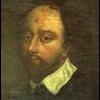
Birley Collieries Branch Line
History dude replied to Paolo Coopio's topic in Sheffield Buses, Trams and Trains
If you look at R Longden's map and at Fields 504 and 505 at the top end, you can see that the cutting cuts away and indicates a bridge over lane/path. If you look in the background of my photo, you can see the school building of City School, which ties in nicely with the modern academy on the modern satellite image and following it down the large green blob of trees might indicate that the bridge is still there. So the "tunnel" is not a tunnel, but a bridge with the railway line on top and the path below it. I have had a look around Google Street View, and modern buildings now block the original view I took in the 1980s. However, there is a footpath at the back which can be accessed via Haxby Street and the cul-de-sac off it. Near where the large building that crosses over the boundary line of the estate. -
Not Part of the Shops built by Thomas Rowbotham. H. Thomas, horse flesh dealer, No. 28 Hereford Street. Sign reads: Horse Flesh Human Consumption. rb00024 Photographer: Ray Brightman, FRPS AFIAP DPAGB Hon PAGB. From The Ray Brightman exhibition collection. Hereford Street, premises include Peter Worth, Estate, and Insurance Agents, No 26, Jn. Mace Ltd., Pet Stores, No 28, H. Thomas, Horse Flesh Dealer, No 30, William Marsden and Son, Bakers. March 1965. s17124 Photographer: Estates Surveyors Department. Hereford Street at junction with South Lane, premises include No. 21 City Exchange, secondhand radio and television supplies, Nos. 23 - 25 Yospa Gordon, retail jeweller, No. 27 Wm. Talbot, Butcher. March 1965s17129 Photographer: Estates Surveyors. Hereford Street at Forge Lane junction, looking towards The Moor, No 14, Thos. J. Austin and Sons (Butchers) Ltd., No 10, Telefusion Ltd., Television Supplies. March 1965.s17122 Hereford Street after the demolition of Nos. 45 - 47 Bridge Inn, premises still remaining include No. 41 A.P. Smith and Bros. Ltd., butchers, No. 39 Fras. Turner, tobacconist, No. 35, Ernest Speechley, snack bar. July 1961.s17120 Photographer: J Lythgoe.
-

Birley Collieries Branch Line
RLongden replied to Paolo Coopio's topic in Sheffield Buses, Trams and Trains
Yes you’re right, the line was in a cutting as it went under Coisley Hill, as you can see from the map detail https://maps.nls.uk/view/125651476 Also, you can see in the image, the photographer must have been stood on the pavement on the bridge, with Stone Lane to their left and the two cottages on the right… the rail line is just out of shot on the right. https://www.picturesheffield.com/frontend.php?keywords=Ref_No_increment;EQUALS;s43471&pos=11&action=zoom&id=85665 An aerial view from 1939, taken over Frecheville, looking over towards Stradbrooke Road, you can see Birley West Colliery in the junction of Linley Lane and Normanton Hill. The rail line passes under Normanton Hill, curves right in an arc, through the fields and it disappears off the right edge of the page, before it crosses Coisley Hill. https://www.britainfromabove.org.uk/en/image/EPW062831 Amazing really that roads and houses have encroached on the area, yet the route it still visible today 😁

